

What Does Trip A and B Mean on a Car?
- Brian Onyango
The trip odometer informs you of the number of miles driven since the last reset. To have a more accurate measurement of your current mileage, you might need to divide it into Trip A and B sections. This is where the Trip A and B functions come in handy.
Trip A and B on an odometer allow you to track two separate mileage logs. For example, you can reset trip B weekly, but keep trip A rolling until the end of the month. Combine it with the total odometer counter, and you can accurately and easily monitor the range and fuel consumption.
On your car’s odometer, Trip A will usually show the mileage driven for a short period. For example, Trip A can be used to indicate the number of miles driven between each fill-up. This helps you calculate how long a tank full lasts to give you a reasonable estimate for fuel economy.
To use Trip A for that purpose, you will need to reset the trip meter before each fill-up. This is a fairly simple process as all you need is to press and hold the reset button until the reading on Trip A goes back to zero.
However, you are not limited to how you can use trip A. If you choose to, you may use it to record your car’s lifetime mileage. It all depends on when you want to reset it.

Trip B works in a similar way to Trip A, but it is an independent trip meter. This means that the reading on Trip B will not be affected by any resets made to Trip A. Generally, Trip B provides an alternative gauge for measuring short-term mileage.
However, Trip B can also be used to measure the distance traveled over a longer period. This is because the reading on Trip B will not be reset until you choose to do so.
Therefore, if you want to know the total number of miles driven in a month, you can simply leave Trip B running and reset it at the end of the month. Trip B can be reset in the same way as Trip A, by pressing and holding the reset button until the reading goes back to zero.
The Difference Between Trip Meter A and B
Although both Trip A and Trip B are used for measuring distance traveled, there is one key difference between the two; Trip A is commonly reset each time you fill up your tank while Trip B can be left running indefinitely.
This means that if you want to track your fuel economy over time, you will need to use Trip A. However, if you want to know the total number of miles driven in a given period, Trip B would be the better choice.
You can tailor your trips to be whatever you want them to be. Just make sure that you take note of the settings for both trips so that your measurements and calculations will be more accurate.
Frequently Asked Questions
How do you turn off a car trip function.
You can switch off your car trip by clearing the stored data in the trip odometer. To do this, you might have to reset your trip odometer. You can only temporarily turn off your car trip because, after a reset, the mileage accumulates once you start driving.

How Do You Read a Car Trip Odometer?
On the dashboard, you’ll typically find a tiny rectangle of digits with about six digits on it. The figures could be digital if you drive a newer vehicle or mechanical if you drive an older one.
If your automobile has Trip A and B, you may need to press the button to change between the two values. Pressing the button afterward displays the miles on the odometer, which is how many kilometers have driven since purchasing the car.
Does Every Car Have a Car Trip Odometer?
Yes, every single car comes with a trip odometer. It is a feature that has been around for decades and is now required by law. The trip odometer helps you keep track of your car’s maintenance, gas mileage, and overall performance.
Why Is the Odometer Important?
The odometer in your car is important because it tells you two things: how old the vehicle is and how many miles it has been driven.
For example, if you own a 2015 Corolla that says 100,000 miles on the odometer in 2020, then you know the average driver drives about 20,000 of those each year–which means your car hasn’t been driven much.
A mileage like this [100,000] is a relatively low number that determines the value of a vehicle because as cars are used over time, parts start to get worn and need replacing more frequently. A car with 200,000+ miles often costs only fractions of its original value because it will likely be worn out.
The odometer can also help you keep track of when your car needs maintenance. For example, most cars need an oil change every 5000 miles. If you forget to get your oil changed, you can end up damaging your car’s engine.
Can an Odometer Be Wrong?

No, generally the odometer cannot be wrong. Do not confuse the odometer with the speedometer, which can be wrong if you place oversized tires on the car.
It’s critical for the odometer to get accurate readings because it’s a legal requirement to have the proper mileage on a car.
Can You Roll Back an Odometer?
Unfortunately, it is fairly common for dishonest people to roll back an odometer. In the past, this was easier to do with mechanical odometers, as you just had to bypass the system.
However, people have also figured out how to roll back digital odometers – even though it is usually a much more difficult process because of the advanced security features.
The sad reality is that any vehicle can be tampered with in this way, so you always need to be on the lookout for signs of mileage fraud.
Why Do People Roll Back Odometers?
A car with lower mileage will always be worth more valuable than one with higher mileage. This is because a car with fewer miles on it is presumed to have been driven less and, therefore, to be in better condition overall.
As such, people who are looking to sell their cars will often roll back the odometers to increase the value of their vehicles.
Trip A and B on an odometer refer to the odometer’s two trip meters. The “A” trip meter measures the distance traveled since it was the last reset, whereas the “B” trip meter has the same purpose, but can be reset independently of Trip A.
This means you can use either trip meter to track your mileage for a specific purpose without affecting the reading from the other.
Check out some of these related topics:
Can You Reset Miles On A Car? Is It Legal To Reset The Odometer?
How to Read Mileage on a Car (Current Odometer Reading)
Does Replacing The Engine Reset Mileage On The Odometer?
Ran When Parked - Car, Vehicle & Truck Guides and Repair Journals.
What is a Trip Odometer: Explaining Your Car’s Mileage Tracker
A trip odometer is a useful feature found alongside the main odometer on a vehicle’s dashboard. It provides additional information to the driver by tracking the distance covered during individual trips.
Unlike the main odometer, which logs the total mileage the vehicle has accumulated over its lifetime, a trip odometer can be reset. This allows drivers to measure the distance of specific journeys, monitor fuel consumption for precise distances, or gauge travel time for regular routes without affecting the permanent record of total miles traveled by the vehicle.
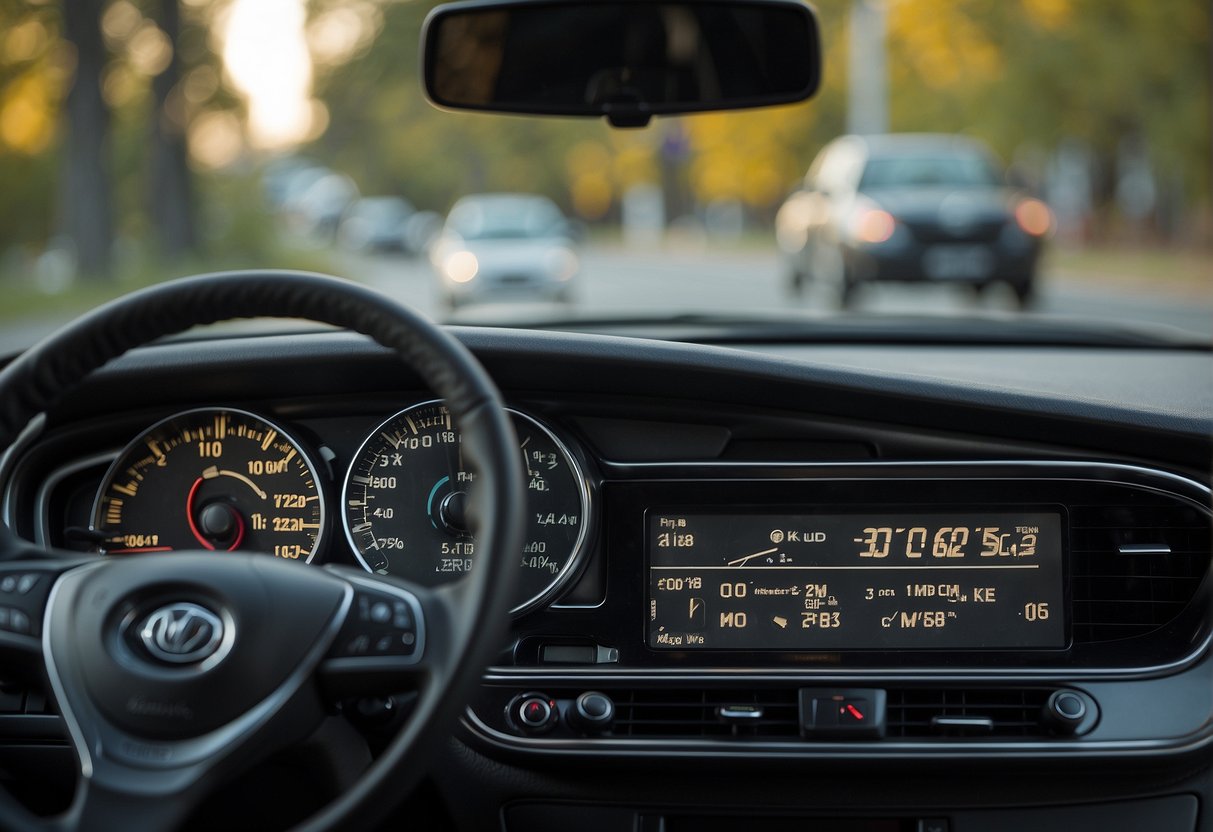
We can reset the trip odometer before starting a new journey to ensure accurate distance tracking for that particular trip.
Many modern vehicles come with digital odometers, which include one or more trip meters providing an easy-to-read display.
The advantage of having this information readily available helps us manage our driving patterns, plan for maintenance, and keep tabs on vehicle performance.
It’s a straightforward yet indispensable tool that complements the comprehensive data offered by the vehicle’s dashboard.
JUMP TO TOPIC
- 1.1 Evolution from Mechanical to Digital
- 1.2 How Odometers Measure Distance
- 2.1 Tracking Mileage for Service Intervals
- 2.2 Fuel Economy and Efficiency
- 3.1 Common Methods of Odometer Tampering
- 3.2 Legal Implications and Consumer Protection
Trip Odometer: A Detailed Dive
Odometers have been central to how we understand vehicle usage. They track the total distance a vehicle has traveled, transitioning from mechanical gears to crisp digital displays.
Evolution from Mechanical to Digital
Initially, odometers were mechanical devices, consisting of a series of gears connected to the vehicle’s transmission. As the car moved, the rotation of the wheels turned the gears, advancing the odometer’s display to reflect the distance traveled.
Their durability meant they could last the lifetime of the vehicle, but they were not without drawbacks. Precise calibration was essential to ensure accuracy, and physical wear could eventually lead to inaccuracy or failure.
In recent years, digital odometers have largely replaced mechanical ones. They work by receiving electronic signals from a sensor, usually located in the vehicle’s transmission.
These signals are then processed by the vehicle’s computer system to display the traveled distance on the digital screen.
Digital odometers offer more than just a readout of total distance; their integration with the vehicle’s electronic systems allows for additional features like trip meters and maintenance reminders.
How Odometers Measure Distance
This distance is known as the tire’s circumference, and by counting each revolution, odometers can determine how far the car has gone.
For a more comprehensive look, here’s an overview:
A trip odometer , specifically, allows us to measure the distance for individual journeys. Located within the instrument cluster, it operates similarly to the main odometer but can be reset to zero, providing separate tracking for the distance of specific trips.
This function is valuable for mileage tracking for business travel, monitoring fuel efficiency, or even just noting the length of a road trip.
A speedometer , by contrast, informs us how fast the vehicle is moving at any given moment, which, although related to distance measurement, serves a separate role in the vehicle’s suite of instrumentation.
The Role of Odometers in Vehicle Maintenance
Odometers serve as vital tools for monitoring vehicle health and scheduling maintenance. They provide essential data that allow us to keep our vehicles running efficiently.
Tracking Mileage for Service Intervals
- Engine Oil : Replace approximately every 5,000 miles
- Air Filter : Replace around 15,000 to 30,000 miles
- Transmission Fluid : Change every 30,000 to 60,000 miles
Fuel Economy and Efficiency
Fuel economy can be optimized through diligent maintenance, using the trip odometer to monitor fuel use between fill-ups.
This helps us assess the vehicle’s fuel efficiency and detect potential issues, which is especially important for the engine and transmission systems.
Accurate readings enable targeted improvements in driving habits or prompt service checks to prevent inefficiencies.
Detecting and Preventing Odometer Fraud
In our experience, preventing odometer fraud begins with awareness and understanding of the common tampering methods. The knowledge of legal protections further adds to a consumer’s defense against this crime.
Common Methods of Odometer Tampering
Odometer fraud is a deceptive act aimed to increase a used car’s resale value by reducing the mileage displayed. Tampering often involves disconnection , resetting , or alteration of the odometer.
Physical Tampering: Manual rolling back of miles on older odometers.
Electronic Tampering: Using sophisticated software to reprogram digital odometers.
Vehicle Data Interference: Altering mileage data in vehicle control units.
To combat these illegal practices, we suggest the following preventative measures :
- Service Records Analysis : Cross-reference the odometer reading with historical service data.
- Wear and Tear Inspection : Physical signs of use may not match with the reported mileage.
- Diagnostic Tools : Use electronic diagnostics to fetch original mileage data from the vehicle’s computer.
Legal Implications and Consumer Protection
Odometer tampering is illegal and violators may face substantial penalties, including fines and imprisonment.
Consumers should be aware that:
We need to ensure that consumers are aware of their rights and the steps taken to seek retribution.
Reporting suspected fraud to agencies like the National Highway Traffic Safety Administration (NHTSA) is crucial.
Regulations at both federal and state levels are in place as a safety net for those impacted by this crime.
Also, professional inspections by certified mechanics can provide an additional layer of protection during the used car buying process.
- Recent Posts
- Hybrid Battery on My Car Died: What Should Be the Next Step? - March 28, 2024
- Northstar V8 Life Expectancy: Unveil the Engine’s Longevity - March 28, 2024
- Nissan Rogue Apple CarPlay: Learn To Connect Smoothly - March 28, 2024
Related posts:
- Car Won’t Move in Drive: Fixing Transmission Issues
- AC Low Side Pressure Too High: Possible Causes and Fixes
- Car Hesitates To Start – All Possible Reasons With Solutions
- Car Alarm Goes off When Unlocking With Key: Reasons
- Noise When Braking at Low Speed: Causes, Fixes, and Cost
- Reset ABS Light on Dodge Grand Caravan: Effective Guide
- Subaru Outback Trunk Won t Open: Why and How To Fix It
- Reset Volkswagen Passat Service Maintenance Light – 8 Steps
What Does Trip A Mean On A Car? All Answered
Your car’s odometer includes various information and parameters. One of them is trip A. Sometimes you wonder about its function and benefits for your car.
What does trip A mean on a car ? Let’s follow us for more details.
What Does Trip Mean On A Car?
The car’s odometer has 2 trip meters, including trip A and trip B . Thanks to the car trip computer , it shows you how many miles you have traveled since resetting your odometer.
In addition to calculating the distance traveled, the odometer also gives you information about your average speed and fuel level. Warning information is also provided to determine your car’s problems.
The car trip is one of the tools to help measure the vehicle’s performance after a period of use. The mileage that trips A and B provide will give you an overview of the problems you are facing while driving.
Most cars with an odometer contain basic information such as mileage, average fuel of the vehicle, stopwatch, and tire pressure.
What Does Trip A Mean On A Car?
As mentioned above, trip A on the car is a part of your odometer. Basically, it will provide trip information about the mileage you have driven in a certain time .
Trip A Function
It can be reset every time you refuel, and you can clean your driving record. It helps you to know the mileage for each full tank of gas.
When you run out of gas, you will calculate the distance to the next gas station to avoid running out of gas on the road.
The mileage display is also a way to know the quality of your vehicle’s oil for on-time maintenance and oil changes.
If the recorded mileage is too high, a “Due Soon” message may appear in some cars to remind you that the oil in your vehicle is deteriorating . You need a new oil change or vehicle maintenance.
Should you let the mileage exceed the programmed distance, “Due Now” and “Past Due” will be displayed and warn you.
Relevant Parameters
Instantaneous fuel gauge.
An instantaneous fuel gauge is one of the standard equipment that tells you the average fuel consumption of your vehicle at the time being.
This value is constantly updated and gives you the exact number of miles you have traveled at that moment.
The gauge also informs you of the fuel flow rate and performance of the vehicle’s engine. It helps you know how to save fuel while using the car.
Average mileage is divided into two categories: on city roads and on public highways. You can expect average fuel economy when traveling on the highway.
Your driving habits can be changed over time so that your vehicle can achieve maximum power while maintaining its performance.
Fuel Tank Range
The fuel available in the tank will indicate how far you can go. It helps you calculate fuel consumption, estimate fuel economy, and when to refuel the vehicle.
When you receive a warning, you need to refuel early to avoid running out of gas in the middle of the road.
In addition, if your driving habits change to an economic driving style, the average fuel level will also change over time. Problems related to refueling will also be reported through the flashing check engine dash light .
Battery Range
Battery power also controls current mileage. The remaining distance will depend on the energy in the battery.
The Electrical distance to empty (DTE) symbol and the TPMS sensor will tell you the condition of your vehicle’s battery.
Using equipment inside the car, such as air conditioning and climate control settings, also causes the battery power consumption to be different than expected. The way you drive can also affect this battery power consumption.
What Are The Differences Between Trip A and Trip B?
Main differences.
Trip A has the main function of measuring the driving distance after each refueling. What does trip B mean on a car ? Trip B has the function of measuring the number of miles traveled after each oil change.
However, not all classes of vehicle show both trips. Cheap vehicles and commercial motor vehicles will have certain differences.
Car owners can choose to display one of two trips depending on their preferences, needs, and purposes.
The fact that 2 people drive the same car and show 2 different trips also brings significant benefits.
They will know the average fuel level and the oil condition of the vehicle. The right vehicle warranty will ensure the accuracy of the trip.
A trip button allows you to switch between two values to know the fuel level in the car and its oil level.
Turn Off/ Reset Trip A & B
How to reset your road trip meter? Sometimes the current trip crashes, and you need to turn it off and reset it. The reset will vary between cars. The best way is to read the user manual carefully before resetting it.
You can go to car forums to consult the opinions of people who have experienced it. They will also help you solve other problems that arise during the reset process.
Normally, resetting trip A and trip B bears no difference. The general formula is to press and hold the trip button on car located on the switch on the left. In addition, it will reset your driving time, average driving speed, and mileage.
The longer you hold the button, the more data is reset. You should note that if the vehicle is idle for 4 hours or more, the odometer data will be reset automatically.
After each trip, resetting the trip meter helps you get accurate mileage, fuel level, and oil status. From there, it assists you to consider the exact time to refuel, maintain the car, and change the oil.
Is Trip Meter And Odometer The Same?
Many people assume that an odometer and a trip meter are the same. However, it is not the case.
The odometer’s main function is to provide information about the total distance traveled by your vehicle during its lifetime.
Meanwhile, a trip odometer tells you the approximate distance during each trip or after each time you refill your tank. It has no tracking function for the total number of trips over the vehicle’s lifetime.
Basically, an odometer will yield more information. Total road information in the car allows drivers to determine when the vehicle needs scheduled maintenance.
At the same time, they may also have to correct the readings and where to record them to compare with the next maintenance period.
Besides, an odometer will determine the average level of your car. It will also help you detect whether the odometer is faulty.
If starting the car turns the sensor data to zero after you fill it up, the odometer is faulty. You need to take it to the auto repair shop to have it repaired.
What Is Trip 1 And 2 In A Car?
What is trip A and trip B in the car ? We think you’ve got the answer. But some categories of motor vehicles, including trip 1 and trip 2, are still confusing.
Are you wondering what function these 2 trips have? They are included in the driver information center (DIC). It provides information about the number of miles you have traveled since the last reset of the meter.
Not all vehicles are available for trip 1 and trip 2. If you want to know more information about them, you can open the Menu by pressing the menu button.
Fuel and mileage information will appear. You just need to scroll down to see trip 1 and trip 2.
What does trip A mean on a car ? Overall, it allows you to track the miles you have traveled after each refueling.
It will help you to know the total distance equivalent to your full gas tank. You will get a reasonable estimate when you are about to run out of gas to fill up.
Hopefully, through this article, you have gained useful information about trip A meaning in a car . Thank you for taking the time to read our article. See you in the next post!
Leave a Comment Cancel reply
Save my name, email, and website in this browser for the next time I comment.

CarParts.com will be back soon!
We apologize for the inconvenience. The CP Team is working on some upgrades to improve our service. Thank you for using CarParts.com!
You can call us at
1-866-529-0412
Reference ID: 18.6fc733e.1713364487.92c2537
What is Odometer in a Car and How does it Work?
- Updated: January 7, 2023
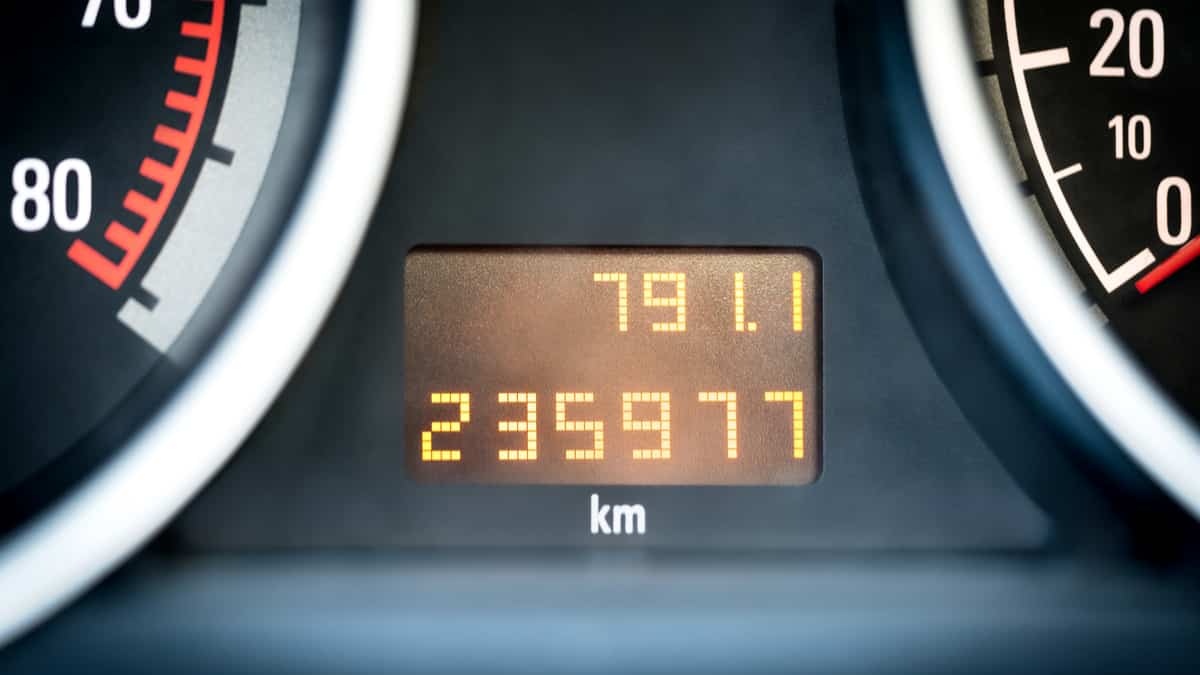
Your car’s dashboard contains many gauges and measurements, but the odometer reading might be the most important. This random set of numbers means more than you might be aware of.
In this guide, I show you how to read the odometer. I also explain what it means to roll back the odometer, and how you can avoid becoming a victim of this practice.
How Does the Odometer Work?
The odometer is a measurement device that shows the total distance traveled by the car. It’s found on the car’s dashboard. Two Greek words come together to form the word “odometer,” leaving us with the meaning of path and measure.
There is also a trip odometer on most cars. Unlike the standard odometer, the trip odometer is easy to reset to show how many miles were traveled during a specific time. It’s a helpful tool if you want to figure out the approximate gas mileage of your vehicle.
How to Check the Odometer Reading
Whether you have a mechanical or electronic odometer, you can read the numbers that are shown on your car’s dashboard. These numbers show how many total miles the vehicle has been driven. However, there are some ways these numbers can be messed with, giving you a false impression.
Here is more detailed information on how to check your car’s odometer, depending on whether you have a mechanical or electronic odometer:
1. Mechanical Odometer
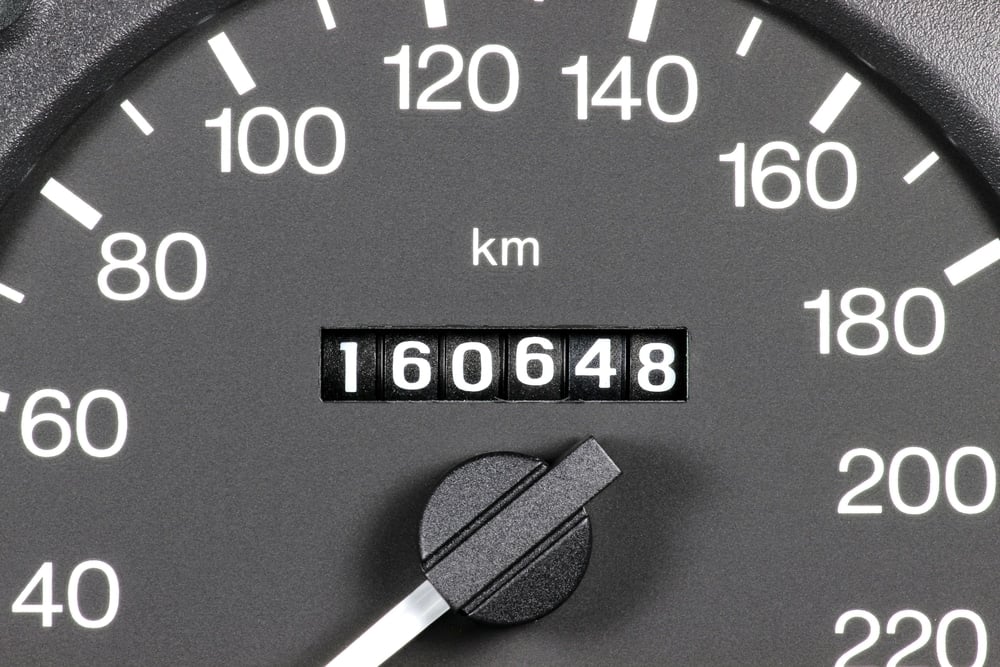
Mechanical odometers are constructed with a few cogs. Each one represents a numerical digit. The functionality of this kind of odometer begins at the car’s transmission. There is a small gear used to change the odometer which is found attached to the transmission.
The drive cable for the speedometer is connected to this gear, with the other end reaching the instrument cluster. As the car moves, the transmission gear also turns in conjunction. The drive cable connected to it changes the digits on the odometer.
As can be seen by the illustration above, the counting begins on the right. This particular odometer shows 160,648 km. All of these numbers will reach a peak value before resetting to zero and starting again. However, the mechanical odometer numbers can often be slightly off-center, making them more difficult to read.
2. Electronic Odometer
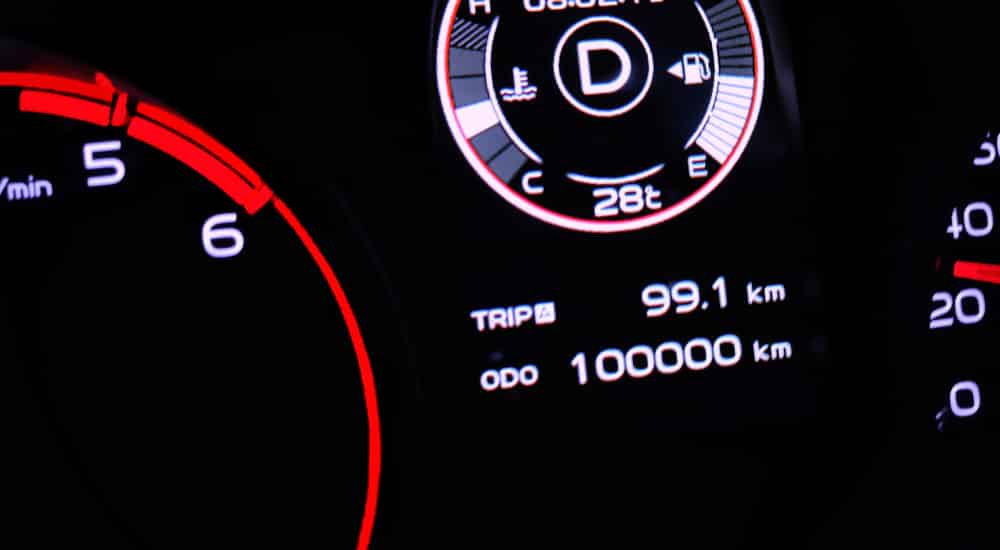
The electronic odometer design is newer than the mechanical type. It’s a digital odometer that is run by the electrical system. While there is still a special gear measuring the mileage, there isn’t a drive cable. Instead, a magnetic sensor is used to count how often the gear turns with the transmission. The mileage is then shown by the numbers reflected on the dashboard electronically.
Electronic odometers are more accurate than mechanical ones, and they aren’t as easy to alter. If you look at the illustration above, it shows the mileage of the vehicle at 100000 km, revealed electronically.
RELATED: 7 Types of Gauges on a Car Dashboard
Why is the Odometer Reading Important?
The numbers you read on the odometer show you how many miles the vehicle has traveled. When you look at the odometer, you know how many miles are on that vehicle’s engine, transmission and other vital parts.
This measurement is important to know before you purchase a vehicle, since the mileage determines a large part of the car’s value. Vehicles are often priced according to the model year, condition and mileage. The lower the mileage, the higher the resale value typically is.
How to Calculate Fuel Economy with the Odometer
You can use the odometer to figure out the approximate fuel economy of your vehicle. Knowing what the car should be getting, you can determine if the engine is working as it should.
- When you fill-up the gas tank, reset the trip odometer.
- Drive normally until the next time you fill-up.
- At that filling session, write down the number of gallons you added and take note of the trip mileage since the last fill-up. This shows how many miles you drove for that many gallons of gas.
- You can divide the number of miles driven by the number of gallons you put in the tank. For example, if you drove 200 miles on 10 gallons of fuel, the average fuel economy was 20 mpg.
To get the most accurate reading, try to record the mileage for an entire tank of fuel. You can also perform the test several times to see a better average.
RELATED: 90 Car Dashboard Symbols & Indicators – Meanings
Can the Odometer Be Wrong?
It’s possible for the odometer to show the wrong measurement. If you have a mechanical odometer, you want to watch it periodically to ensure it is recording the mileage correctly. If you measure the distance you’ve driven, the odometer should accurately report it.
If the odometer isn’t working correctly – even a little – the mismeasurement can quickly add up. Let’s assume that the odometer changes too soon – again, even by a little. It won’t take long before the car is showing far more miles than what has actually been driven, leading it to lose resale value unnecessarily.
It’s possible to have the fault repaired and get back on track. If you plan to sell your car in the future, this is something you want to take care of right away.
What Does it Mean to Roll Back an Odometer?
Dishonest people aren’t afraid to roll back the odometer to make a car look like it has fewer miles than it actually has. It is much easier to roll back a mechanical odometer. While there are some hoops to jump through to get around the security system, criminals know how to make it happen with minimal effort.
It’s not impossible to roll back a digital odometer, and those who have sought out how to do it have succeeded. It is a lot harder, because the security features are more advanced, but it’s not impossible. With either type of odometer, you must be on guard against tampering and fraud.
Otherwise, you could pay more for a vehicle, assuming it’s worth a higher value than it actually is. Odometer tampering is illegal. If you realize that the odometer of a vehicle has been rolled back, you want to take legal action against the car dealer.
How to Tell if Odometer Has Been Rolled Back
Before you purchase a vehicle, you want to be sure that the odometer is accurate. The best way to do this is to run a CARFAX report on the vehicle . With this vehicle history report, you can see how many owners the car had and see the service records. With all of the reported mileage and dates, you will know very quickly if the odometer has been turned back at some point.
For example, if the CARFAX shows that in 2019 the car had 156,000 miles on it, you would know something is wrong if you are looking at it in 2022 with only 125,000 miles on the odometer. This simple step indicates that the odometer has been messed with, and you should avoid the car at all costs.
You can also physically look at the mechanical odometer to see if anything appears shady. If you see scratches around the numbers or other imperfections, this should serve as a red flag to you.
Finally, listen to your gut. If the car dealer gives you a bad feeling or doesn’t seem to care about regulations, it’s best to choose somewhere else to do business. If the deal seems too good to be true, it probably is.
Categories: Electric , Warning Lights
Related Posts
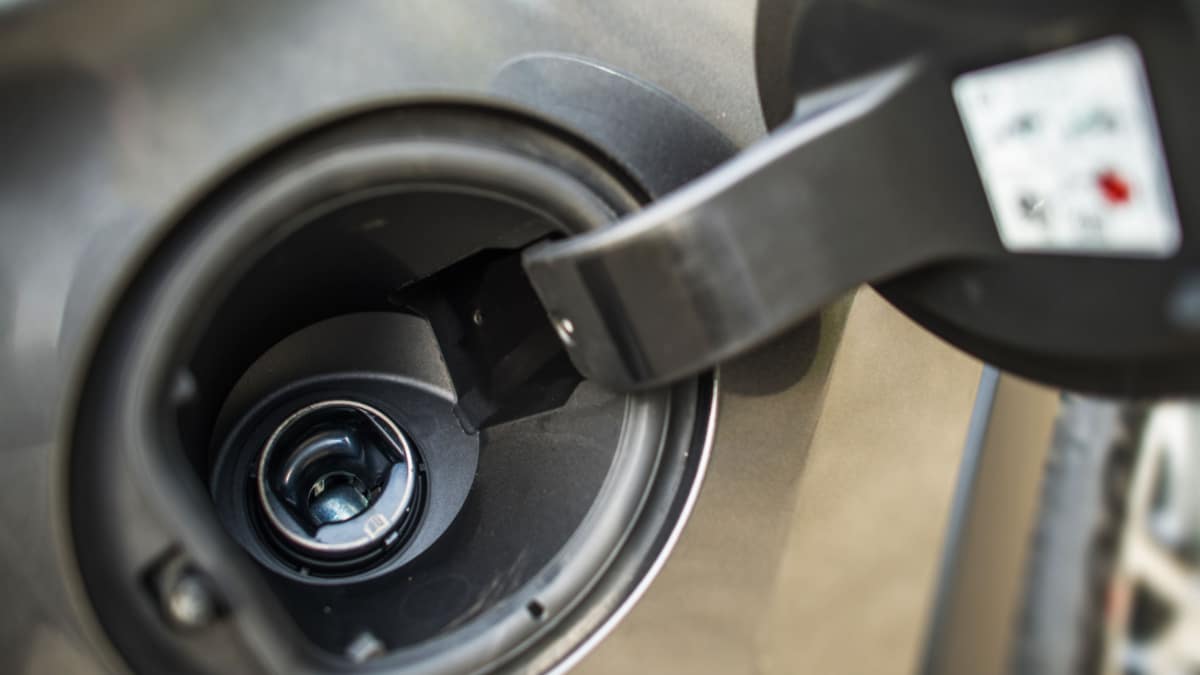
Latest Posts
- The Best & Worst Years Of Ford Explorer
- Best & Worst Years Of Toyota Corolla
- Best & Worst Years of Toyota RAV4
- When Should Your Child Switch To A Forward-Facing Car Seat?
- The Best & Worst Years Of Toyota Camry
- I Accidentally Put Premium Gas In My Car, What To Do?
AI-Assisted Car Shopping

What Does "Trip A" Mean On A Car?
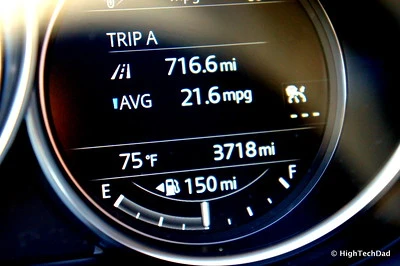
Car maintenance, automated.
CoPilot for Owning will tell you when it's time to get your scheduled service, when a new or existing recall is issued for your vehicle, how to avoid getting ripped off at the repair shop, and much more.
Source: Flickr
There are many signs and indicators, from your available gas to your total mileage. Many people like to track their mileage, but it can be tricky to accurately measure. That’s where the idea of Trip A comes into play, but not everyone knows what this means. You might wonder - what does Trip A mean on a car?
If you’re interested in learning more about what Trip A means in a vehicle, you’ve come to the right place. Read on to learn more about what Trip A means, what Trip B means, what separates the two, how to turn off the car trip function, and other valuable information. The more you know about your vehicle, the easier it will be to manage and maintain.
What Does Trip A Mean on A Car?
What does Trip A mean on a car? According to mechanicask.com , Trip A and Trip B in a car are different ways to measure the mileage of separate trips in a vehicle. Trip A shows the mileage for a shorter period, such as if you want to keep track of the miles driven between trips to the gas station.
It’s helpful to measure different forms of mileage in a vehicle because it allows you to:
- Track the fuel efficiency of your vehicle
- Determine how far a destination is from you
- Decide how far it is to get to a location
These will help you take advantage of your vehicle features.
Trip A measures the shorter distance, which is helpful if you want to check on your overall mileage and other items relating to the general ability of your vehicle on the road. If you measure longer distances, you should take advantage of Trip B to determine that measurement for your vehicle.
What Does Trip B Mean on A Car?
What does Trip B mean on a car? According to vehiclefreak.com , Trip B on a car is an independent trip meter instead of a shorter distance tracker. It’s an alternative gauge if you’re already using Trip A for something else and serves to measure a long-distance trip in your vehicle.
Trip B is helpful if you want to track your driving over an extended period. If you’re curious about how much you drive in a month, you can set Trip B to monitor your monthly miles and then reset it at the beginning of the month. From there, you can determine how far you drive in your life in a single month.
Trip A and Trip B are very similar in what they offer to the driver. However, there are some distinct differences.
DOWNLOAD THE FREE APP
The CoPilot car shopping app is the smartest way to buy a car. Get a curated list of the best cars for sale in your area, as well as notifications if a similar vehicle is listed nearby at a lower price. CoPilot is the smartest way to shop for used cars.
What Separates Trip A and Trip B?
When considering the question - what does Trip A mean on a car - it’s critical to determine what separates Trip A from Trip B. They sound very similar but there are clear distinctions between the two.
Trip A is commonly used to track your trip over short distances, so it is most often reset every single time you refill your tank. It’s practical for short distances, but it won’t do as well if you want to track over a longer period.
In contrast, Trip B can be left running for as long as you want it to go. It could be a month, a few months, a year, or even more. It all depends on what you want to track.
Trip A and Trip B are both valuable tools to have if you want to ponder your mileage. However, they are not the same. It’s helpful to remember these so you don’t attempt to keep track of a particular mileage on the wrong Trip odometer.
8 QUESTIONS TO ASK WHEN BUYING A USED CAR
So you’re in the market for a used vehicle? We’ve gone ahead and prepped some essential questions to ask when buying a used car .
How Do You Turn Off the Car Trip Function?
Some people might not want to have their car trip function on while they drive, and that’s okay. It’s possible to turn off the car trip function if you want to leave it on your classic odometer without any additional trackers on while you drive.
According to vehiclefreak.com , you can turn off your car trip function by completing the following steps:
- Heading to your odometer
- Learning the stored data in your trip function
Everything will be clear once you complete this process.
Of course, it’s critical to consider that this change will only be temporary. Once you start driving, the miles will rack up and you will have to see the numbers go up again. There is no real way to stop it from happening.
THE BEST CARS FOR COLLEGE STUDENTS
Whether you’re squeezing into a tight campus parking spot or hauling ten loads of laundry back home, these best cars for college students will get you, your friends, and your stuff where you’re going.
Does Every Car Have a Car Trip Odometer?
When considering the question - what does Trip A mean on a car it’s helpful to think about whether your car has an odometer. If you want to complete a trip in your car, you will need an odometer. Lucky for you, every vehicle comes with a car trip odometer, ready to start tracking right from the start.
Of course, it might take some time to get used to using your various car trip odometers. The more familiar you get with the process, the easier it will be to track your habits and determine your mileage on the road. You can determine how your driving is and how much fuel your vehicle uses on the go. Plus, you can see how much you drive.
Final Thoughts
If you see Trip A on your car, know that it’s used to keep track of a section of mileage separate from your standard odometer. Trip A tracks shorter distances and typically resets itself when you refill your gas tank. On the other hand, Trip B is used to handle longer distances and will go until you turn it off.
We hope this information was helpful! The more you know about various features in your vehicle, the easier it will be to determine how you are driving and how it impacts your mileage. It’s a good idea to track your habits to determine if there’s anything you’re doing wrong to save more money on your fuel.
Get a Curated List of the Best Used Cars Near You
The CoPilot car shopping app is the easiest way to buy a car. Tell us what you’re looking for and we’ll search the inventories of every dealership in your area to make you a personalized list of the best car listings in your area.
Only looking for newer models? CoPilot Compare is the search engine for nearly-new cars . Only see cars five years or newer with low mileage — CoPilot Compare is the best way to find off-lease, early trade-in, and CPO cars.
The best part? CoPilot is built using the same technology that dealerships use to buy and sell their inventories, so we have more info on each vehicle than competitors. CoPilot doesn’t work with dealerships, so there are no sponsored posts or other shady practices — just the most info on the best cars. Check out our About Us page to see how CoPilot works.
Popular Car Searches
Used Makes and Models
Used Cars for Sale by City
Why Use CoPilot?
Shop and buy your next car with confidence. CoPilot searches every car at every dealer, every day, and ranks them based on what matters to you.
When you shop for a new or used car, CoPilot helps you know more. We search every car at every dealer so you don't have to, we give you data and insights you won't find anywhere else, and we rank every car so it's easy to find the best car at the best price.
When you're ready to buy your next car, CoPilot helps you make sure you never get taken advantage of at the dealership. Would you like to know more than the salesperson? CoPilot helps you avoid any tricks, traps, and scams. Know how and what you can negotiate. With CoPilot, you'll save time, money, and frustration.

© 2023 CoPilot. All Rights Reserved.
How To Read an Odometer
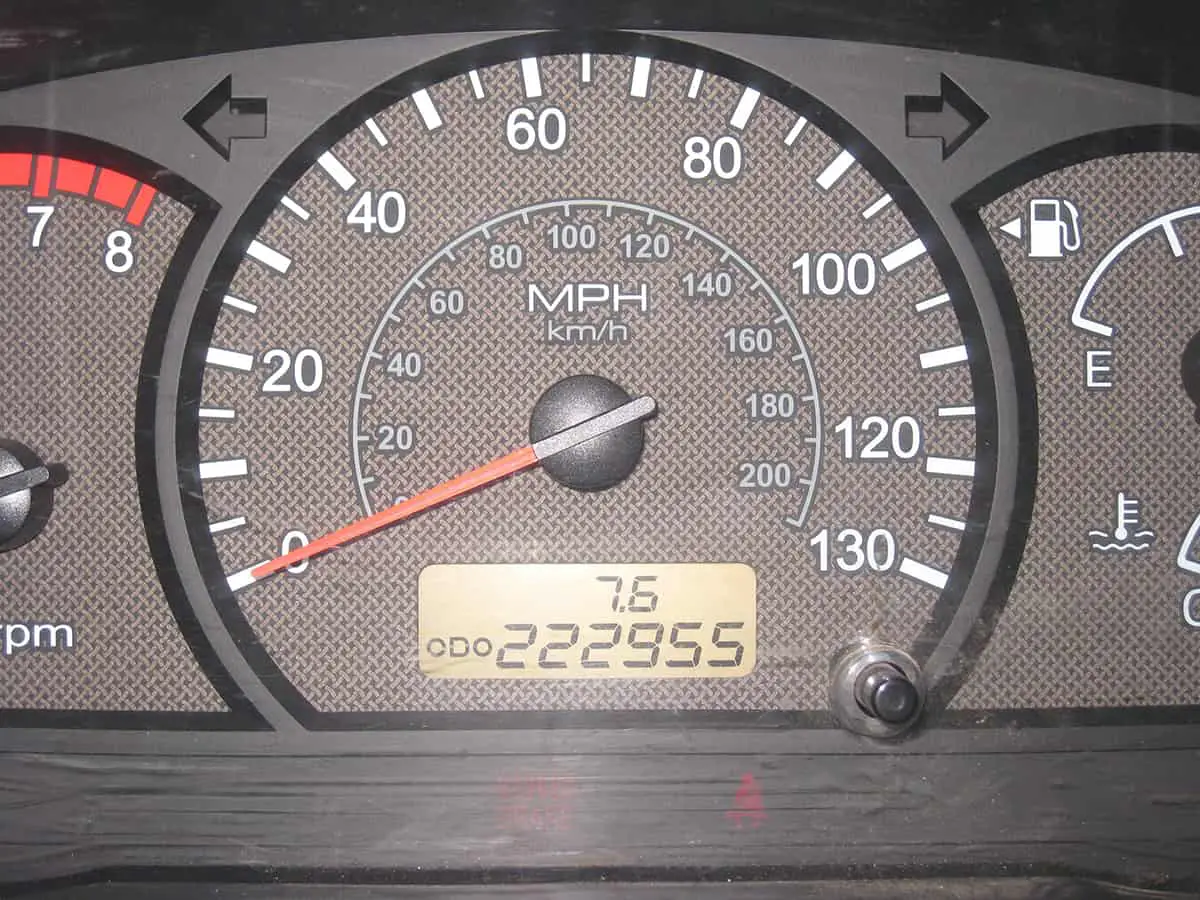
Reading an odometer is like reading the story of your car’s journey. It’s the page-turner that reveals the miles driven, the memories made, and the experiences shared. But if you’re trying to purchase a second-hand car, or if you want to make sure your child isn’t sneaking away with your car at night, you should figure out how to read an odometer.
An odometer has 6 digits with a 1/10 th digit. The number reading displays how many miles the car has driven since it was released from the factory. There is also a trip odometer that counts how many miles you’ve driven since your last “trip.”
In this guide, I’ll explain how to read an odometer in greater detail and what trip odometers are (and how to use them).
What is an Odometer?
An odometer is a device that measures the distance traveled by a vehicle. It’s typically found in cars, trucks, motorcycles, and other road vehicles and displays the distance in miles or kilometers. The odometer is usually located on the dashboard near the speedometer and is designed to provide an accurate record of the total distance traveled by the vehicle.
The odometer works by using gears and a set of mechanical or electronic components to calculate the number of rotations made by the wheels of the vehicle. The odometer is connected to the drivetrain of the vehicle, which allows it to measure the distance traveled accurately. The odometer readings are used for various purposes, including tracking maintenance needs, determining the value of a vehicle, and monitoring fuel efficiency.
Types of Odometers
Your car will come with either a mechanical odometer or a digital/electric odometer.
1. Mechanic odometer
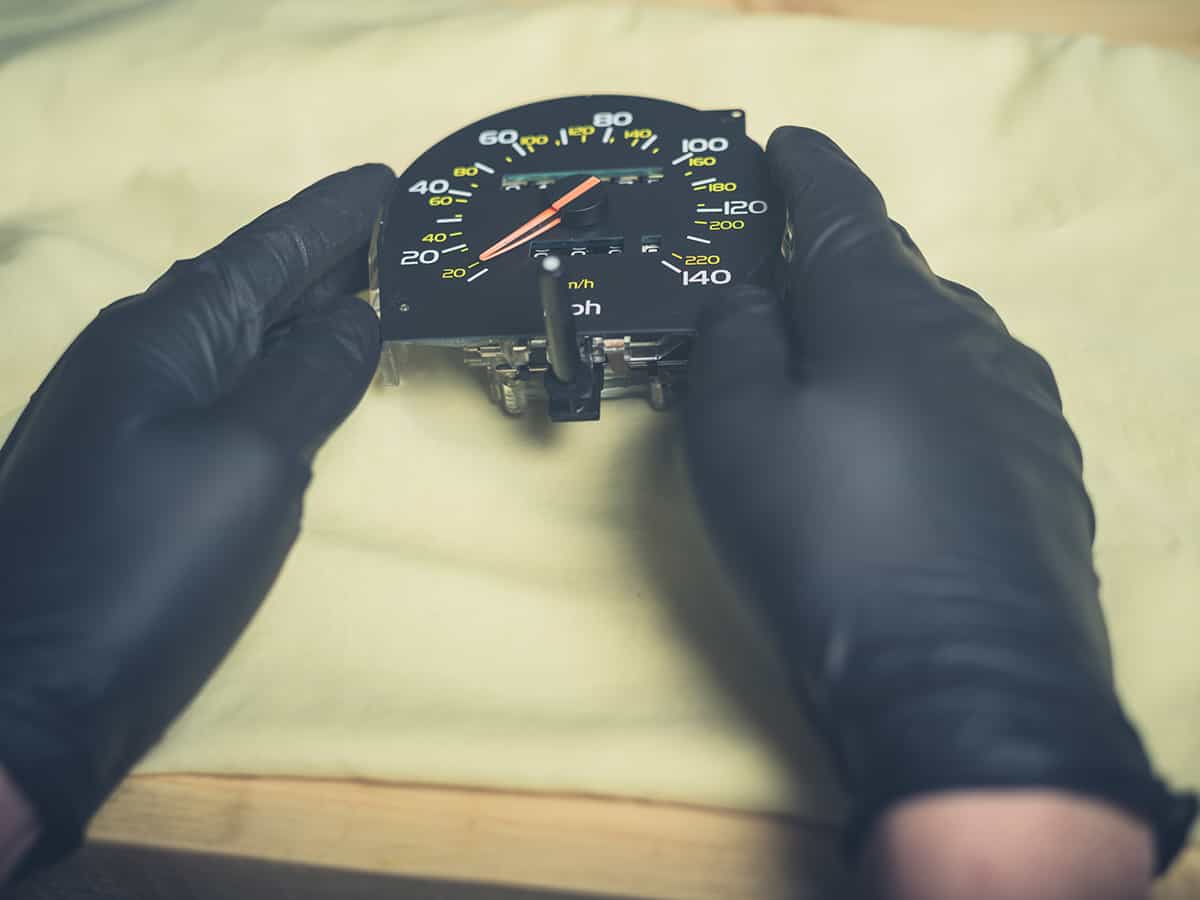
This is the traditional type of odometer that uses gears and a set of mechanical components to calculate the distance traveled by a vehicle. It’s a simple and straightforward device that has been in use for many decades.
Mechanical odometers are typically less expensive than digital odometers and are known for their durability and reliability. However, they are not as accurate as digital odometers and can be prone to wear and tear over time.
2. Digital/Electric odometer
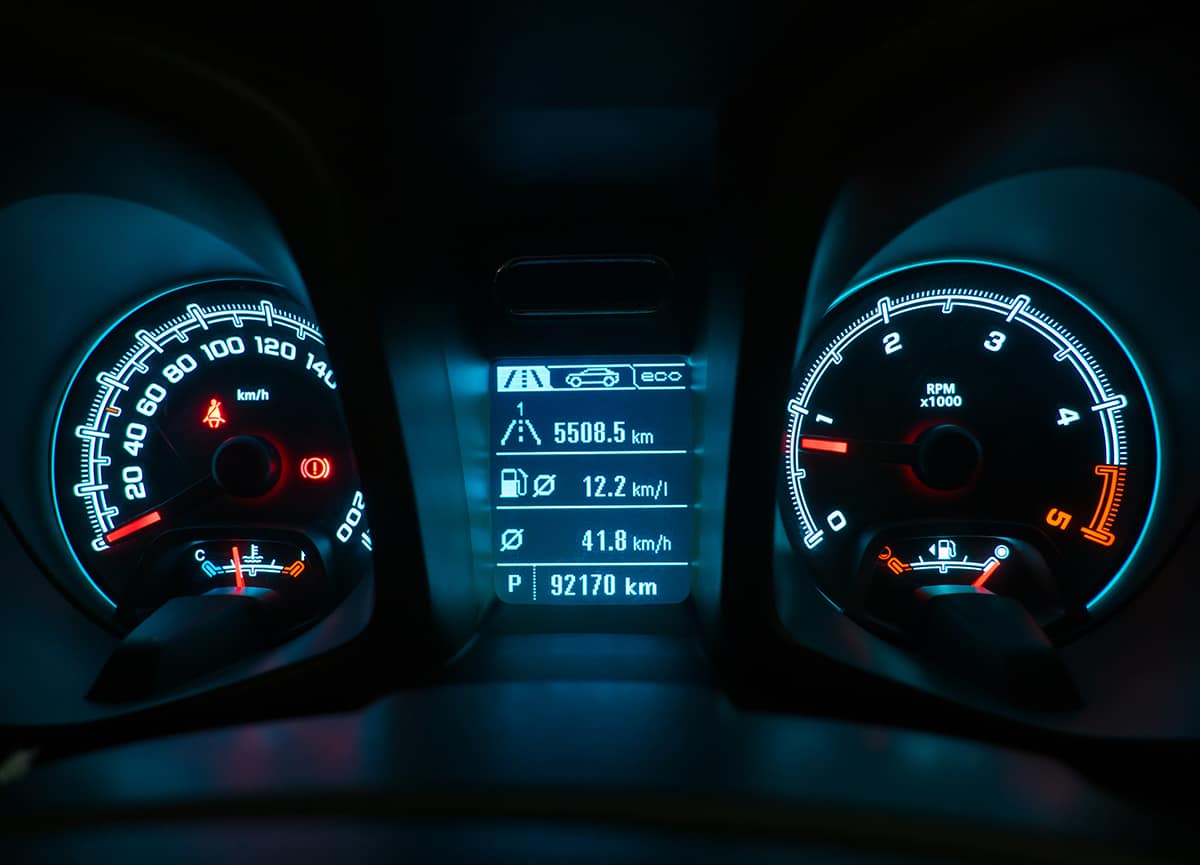
This is the modern type of odometer that uses electronic components to display the distance traveled by a vehicle. It’s typically found in newer vehicles and is designed to provide an accurate and reliable record of the distance traveled.
Digital odometers are easy to read and can display the readings in miles or kilometers, making it easy to interpret the data. They also often offer additional features, such as a trip odometer and odometer correction, which allow for more detailed monitoring of the vehicle’s performance. However, digital odometers are more expensive than mechanical odometers and are susceptible to technical issues such as software errors.
How to Read an Odometer
Reading an odometer means seeing the total miles driven in a car. You’ll want to know how many miles the car has driven to guesstimate its engine’s condition. Normally, an odometer with a higher mile figure denotes an engine that has seen better days. The lower the odometer’s reading, the “newer” and less worn-out it is.
The odometer’s display can be found on your car’s dash. If it’s mechanical, it will consist of 7 boxes, with the final box (representing 1/10th of a mile) being a different color. The first six boxes show the total miles driven (up to 999,999 miles). For instance, if the boxes are filled with 1, 2, 3, 4, 5, 6, and 7, that means the car has driven for around 123,456.7 miles.
If you notice that one of the digits on the odometer is between 2 numbers, that means that the digit is on the verge of increasing—in other words, the previous digit is about to go up from 9 to 0.
Please note that the odometer’s readings may also be expressed in kilometers, depending on where you live. In this case, the example above means that the car has driven for around 123,456.7 kilometers since it was released from the factory.
On the other hand, if your car is fitted with a digital or electric odometer, the numbers will be displayed in digital format.
What Is a Trip Odometer?
If you have a mechanical odometer, take a close look at it. You’ll most likely find a narrow secondary readout somewhere beneath the 7-digit main display. That is known as the trip odometer.
A trip odometer is a feature found in some odometers that allows you to measure and record intermediate distances between full readings of the odometer. It’s a separate, secondary meter that is used to track shorter distances, such as a single road trip or a daily commute.
The trip odometer is usually reset to zero after each use and can be reset manually by the driver. It provides a convenient way to monitor the distance traveled for a specific trip without having to manually track the distance and calculate it yourself. This information can be useful for tracking fuel efficiency, monitoring maintenance needs, and recording distances for reimbursement or tax purposes .
In some cars, the trip odometer is a part of the primary odometer, while in others, it has its own display that is located somewhere underneath the main odometer display. The trip odometer is a useful tool for tracking the distance traveled for specific trips, and it can be a valuable addition to the overall monitoring and performance of your vehicle.
How to Use the Trip Odometer
Unlike the main odometer, the trip odometer can be reset to 0. This allows you to record the traveled distances of short trips—for example, if you’d like to record how many miles you drive from home to work, from work to school, how many miles you drive between gas refills, etc.
The trip odometer will likely have a button that you can press. This allows you to scroll from trip A to trip B, so you can record the distances of 2 journeys. In mechanical odometers, pressing it will clear the readout, rolling it back to its 0 state.
For digital odometers, pressing the odometer button once will let you scroll between trip A, trip B, and the main readout. You can clear the trip readouts by pressing and holding the button for 3 to 5 seconds.
Can You Roll Back an Odometer?
If you mean the main odometer—i.e., the one that’s supposed to read the total miles driven since the car was made—the unfortunate answer is, yes, you can. I won’t teach you how to do it here since it’s unethical.
Rolling the odometer back, also known as odometer fraud or tampering, refers to the act of altering the readings on an odometer to make a vehicle appear to have traveled fewer miles than it actually has. This unethical practice is often done to increase the resale value of a vehicle or to conceal its true condition.
Rolling the odometer back is illegal in many countries, as it misleads potential buyers and constitutes fraud. In addition, it can also be dangerous, as it conceals important information about the vehicle’s maintenance history and wears and tear. When a vehicle has more miles on it than indicated on the odometer, it may have worn-out parts or other hidden problems that could affect its performance and safety.
However, rolling back the trip odometer is completely fine and can be done straight from the dashboard (check the previous section to learn how).
Related Articles
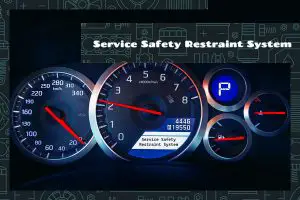
Customer Viewpoint Ratings and Reviews
Who leaves ratings and reviews?
Ratings and reviews are provided by customers who have either purchased a vehicle or visited a dealership for service.
How are ratings and reviews collected?
Customers are invited to participate in a survey administered by MaritzCX, an independent, third-party supplier.
Can dealerships edit or remove reviews?
No. Ford personnel and/or dealership personnel cannot modify or remove reviews.
Are reviews modified or monitored before being published?
MaritzCX moderates public reviews to ensure they contain content that meet Review guidelines, such as:
‣No Profanity or inappropriate defamatory remarks
‣No Personal Identifying information (e.g., customer phone number or email)
‣No Competitor references (e.g., another brand or dealership)
‣Dangerous behavior (e.g. threatening to harm employees or others)
‣Lack of adequate text (e.g., symbols, emoji’s and random letters)
Reviews on the product and not the customer’s Sales or Service experience
- Electric Vehicles
- Pay my bill
- Update my SYNC
- Replace a Part

How do I use the trip computer in my Ford?
The trip computer in your vehicle keeps track of the time and distance you have traveled. The trip computer has several menu options that you can access by using the five-way controls on your steering wheel. Press down, up, left, or OK to scroll through the options, which include:
- Distance to Empty: Indicates the approximate distance your vehicle can travel before running out of fuel.
- Trip Odometer: Registers the distance you have traveled on an individual trip.
- Trip Timer: Keeps track of how long each trip takes. The timer stops when you turn your vehicle off and restarts when you restart your vehicle.
- Average Fuel: Shows the average fuel economy for a given trip.
- Outside Temperature: Shows the outside air temperature.
- Digital Odometer: Tracks the overall distance you have traveled.
- All Values: Shows the Distance to Empty, Trip Odometer, Trip Timer, and Average Fuel.
Using Your Trip Computer
Setting your trip odometer to track an individual trip.
- Scroll to either the Trip Odometer, Trip Timer, or Average Fuel screen using the five-way steering wheel controls.
- Press and hold the OK button until you see the status bar loading. When the status bar fills in all the way, your computer will be reset.
Resetting All Trip Computers
- Scroll to the All Values screen using the five-way steering wheel controls.
- Press and hold OK until you see that the computer is reset to zero.
Changing the Display Information
- Go to Settings from the main menu.
- Measure Unit or Distance depending on your vehicle
- Temperature
Note: Some vehicles may come with an additional trip computer, Trip 2. It has the same features as Trip 1 and makes keeping track of multiple trips easier.
Additional Information
What is the Distance to Empty feature?
Advertisement
How Odometers Work
- Share Content on Facebook
- Share Content on LinkedIn
- Share Content on Flipboard
- Share Content on Reddit
- Share Content via Email
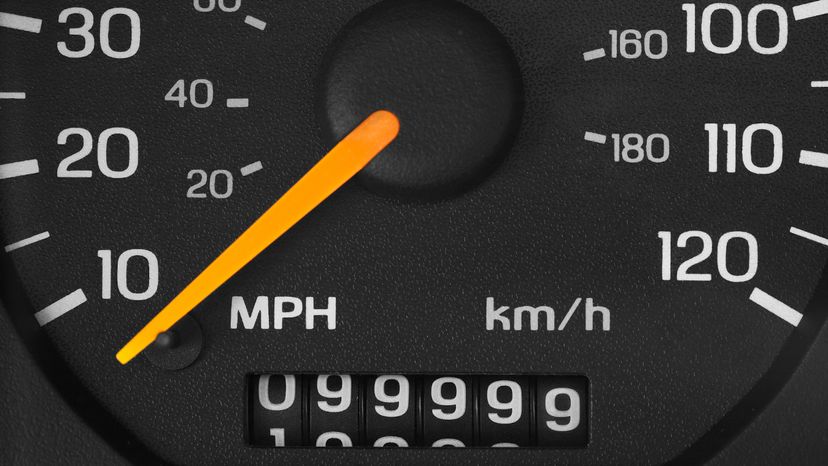
Mechanical odometers have been counting the miles for centuries. Although they are a dying breed, they are incredibly cool because they are so simple! A mechanical odometer is nothing more than a gear train with an incredible gear ratio.
The odometer we took apart for this article (pictured above) has a 1690:1 gear reduction ! That means the input shaft of this odometer has to spin 1,690 times before the odometer will register 1 mile.
Odometers like this are being replaced by digital odometers that provide more features and cost less, but they aren't nearly as cool. In this article, we'll take a look inside a mechanical odometer, and then we'll talk about how digital odometers work.
Mechanical Odometers
Computerized odometers.
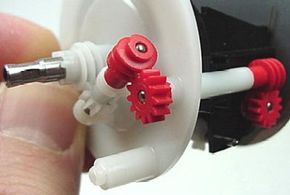
Mechanical odometers are turned by a flexible cable made from a tightly wound spring. The cable usually spins inside a protective metal tube with a rubber housing. On a bicycle , a little wheel rolling against the bike wheel turns the cable, and the gear ratio on the odometer has to be calibrated to the size of this small wheel. On a car , a gear engages the output shaft of the transmission , turning the cable.
The cable snakes its way up to the instrument panel, where it is connected to the input shaft of the odometer.
The Gearing
This odometer uses a series of three worm gears to achieve its 1690:1 gear reduction . The input shaft drives the first worm, which drives a gear. Each full revolution of the worm only turns the gear one tooth. That gear turns another worm, which turns another gear, which turns the last worm and finally the last gear, which is hooked up to the tenth-of-a-mile indicator.
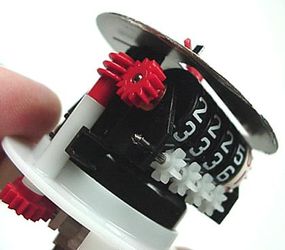
Each indicator has a row of pegs sticking out of one side, and a single set of two pegs on the other side. When the set of two pegs comes around to the white plastic gears, one of the teeth falls in between the pegs and turns with the indicator until the pegs pass. This gear also engages one of the pegs on the next bigger indicator, turning it a tenth of a revolution.

You can now see why, when your odometer "rolls over" a large number of digits (say from 19,999 to 20,000 miles), the "2" at the far left side of the display may not line up perfectly with the rest of the digits. A tiny amount of gear lash in the white helper gears prevents perfect alignment of all the digits. Usually, the display will have to get to 21,000 miles before the digits line up well again.
You can also see that mechanical odometers like this one are rewindable . When you run the car in reverse, the odometer actually can go backwards -- it's just a gear train. In the movie " Ferris Bueller's Day Off ," in the scene where they have the car up on blocks with the wheels spinning in reverse -- that should've worked! In real life, the odometer would've turned back. Another trick is to hook the odometer's cable up to a drill and run it backwards to rewind the miles.
While that does work on older mechanical odometers, it does not work on the new electronic ones, as we will see in the next section...
If you make a trip to the bike shop, you most likely won't find any cable-driven odometers or speedometers. Instead, you will find bicycle computers. Bicycles with computers like these have a magnet attached to one of the wheels and a pickup attached to the frame. Once per revolution of the wheel, the magnet passes by the pickup, generating a voltage in the pickup. The computer counts these voltage spikes, or pulses, and uses them to calculate the distance traveled.
If you have ever installed one of these bike computers, you know that you have to program them with the circumference of the wheel. The circumference is the distance traveled when the wheel makes one full revolution. Each time the computer senses a pulse, it adds another wheel circumference to the total distance and updates the digital display.
Many modern cars use a system like this, too. Instead of a magnetic pickup on a wheel, they use a toothed wheel mounted to the output of the transmission and a magnetic sensor that counts the pulses as each tooth of the wheel goes by. Some cars use a slotted wheel and an optical pickup, like a computer mouse does. Just like on the bicycle, the computer in the car knows how much distance the car travels with each pulse, and uses this to update the odometer reading.
One of the most interesting things about car odometers is how the information is transmitted to the dashboard. Instead of a spinning cable transmitting the distance signal, the distance (along with a lot of other data) is transmitted over a single wire communications bus from the engine control unit (ECU) to the dashboard. The car is like a local area network with many different devices connected to it. Here are some of the devices that may be connected to the computer network in a car:
- Engine control unit (ECU)
- Climate control system
- Power window controls
- Anti-lock braking system
- Air bag control module
- Body control module (operates the interior lights, etc.)
- Transmission control module
Many vehicles use a standardized communication protocol, called SAE J1850, to enable all of the different electronics modules to communicate with each other.
The engine control unit counts all of the pulses and keeps track of the overall distance traveled by the car. This means that if someone tries to " roll back " the odometer, the value stored in the ECU will disagree. This value can be read using a diagnostic computer, which all car-dealership service departments have.
Several times per second, the ECU sends out a packet of information consisting of a header and the data. The header is just a number that identifies the packet as a distance reading, and the data is a number corresponding to the distance traveled. The instrument panel contains another computer that knows to look for this particular packet, and whenever it sees one it updates the odometer with the new value. In cars with digital odometers, the dashboard simply displays the new value. Cars with analog odometers have a small stepper motor that turns the dials on the odometer.
For more information on odometers and other often-overlooked car parts, check out the links on the next page.
Lots More Information
Related howstuffworks articles.
- How Gear Ratios Work
- How Car Computers Work
- How Windshield Wipers Work
- How Power Door Locks Work
- How Power Windows Work
- How Fuel Gauges Work
- How Bicycles Work
- Rollover Accidents Explained
- The 1967 Pontiac GTO Explained
- The 1965 Oldsmobile Cutlass 442
- The 1967 Shelby GT 500 Explained
More Great Links
- Odometer history
- Speedometer/Odometer Calibration Program
- Automotive 101: The Electrical System (An Overview) - Has info on speedometers and odometers
- The Federal Odometer Tampering Statutes
- Odometer Effect for Serial LCDs
Please copy/paste the following text to properly cite this HowStuffWorks.com article:


What Does Trip A Mean On Honda Accord?
displays the total mileage that your car has traveled. displays the overall mileage since the last reset. Two distinct trips can be measured using TRIP A and B. a trip meter’s reset. Display the trip meter, then press and hold the knob to reset it.
In This Article...
Trip in a Honda—what does that mean?
Trip is used to determine the distance between two locations and to calculate the vehicle’s mileage (fuel consumption and mileage traveled).
You must push and hold the speedometer’s button in order to make “0.”
What are the goals of trips A and B?
The efficiency between each fill for lengthier outstation excursions with numerous fills can be measured using Journey A, and the efficiency of the entire trip can be calculated using Trip B. Fuel efficiency will be affected by any changes to the driving cycle, including traffic and even vehicle load.
How may a trip be eliminated from a Honda Accord?
Monitoring your driving behavior will help you save money over time. And pressing a single button is all it takes to reset the trip odometer in your Accord.
Here’s what you need to know to reset the trip odometer on your 2016 Honda Accord LX:
- A total of two excursions, Trip A and Trip B, can be tracked.
- Your steering wheel’s up/down arrows can be used to switch between Trip A and Trip B.
- To reset a trip to 0.0 miles, depress the SEL/RESET button while doing so.
Downloading the Jerry app is another fantastic way to save money on car ownership. You may acquire vehicle insurance estimates for coverage equivalent to your current plan by just answering a few questions that will take you about 45 seconds to complete. Users of Jerry save $879 year on average.
What does the A beside my mileage mean?
That “A” simply denotes how awesome all those kilometers were! Really, Todd is correct. mileage counter. To see what he meant, simply push the tiny black stem that protrudes from the gauge cluster.
What do trips 1 and 2 in a car mean?
You may monitor the distance your car has covered since the odometer was reset by using the Trip 1 and Trip 2 function in the driver information center (DIC). Trips 1 and 2 are quite simple to reach:
1. Press the MENU button to bring up the Trip/Fuel Information Menu on the DIC.
2. Scroll to either Trip 1 or Trip 2 using the toggle buttons, then hit SET/CLR.
3. Press SET/CLR once more to erase and reset the current trip odometer.
A and B in a speedometer stand for what?
(A) A car’s speedometer measures the vehicle’s current speed. (b) An odometer is a tool used to track the distance an automobile has driven.
Fill Up and Record
- Totally fill up your gas tank.
- If your vehicle has a trip odometer, reset it or note the mileage on the master odometer.
- Drive your car as usual and allow the gas in the tank get down to at least half a tank.
- Make your way to the petrol station and refuel.
- Keep track of how much fuel was used to fill the tank.
- Note the new odometer mileage or the total distance traveled.
- Use the trip odometer to calculate the distance traveled, or divide the current reading by the previous one.
- Multiply the number of gallons required to fill the tank by the distance traveled. The outcome is the typical MPG your automobile produced during that driving time.
The same procedures can be used to determine miles per gallon. miles traveled per gallon equals kpl
You may track and enhance your gas mileage by repeating this process each time you fill up your tank. You can increase your fuel economy!
But how about the price? What is the cost of driving your car? Knowing that adds a new step.
How can I determine my car’s average?
It’s easy, and here’s what you should do:
- Refill Your Tank. Fill the petrol tank of your automobile to the top using a pre-selected fuel pump and dispenser.
- Adjust the meter. Put the car’s trip meter back to zero.
- obey the posted speed limit.
- Travel about.
- Refill the Tank.
- Determine the car’s mileage.
Where is the Honda Accord’s trip button?
Congratulations on getting a new automobile! A Honda Accord EX is an excellent car, and fortunately, reading your odometer only requires a few button presses.
Press the TRIP button under the climate vent to the left of your steering wheel to check your current mileage or to cycle through the mileage for your current trips A or B. By doing this, the trip information will be shown by cycling through the numbers on the bottom right of your digital gauge cluster. Holding down the TRIP button will reset TRIP A or B. Additionally, you may tell it to reset itself each time you fill up with gasoline.
The total number of miles driven since the car was new is usually represented by the highest value on the display. Examine any documents you received at the time of purchase for additional confirmation. You should often discover the odometer reading from the sale.
You will require auto insurance if you have purchased a new automobile. Download the Jerry app to get individual quotes from more than 50 leading insurance companies to start your hunt. Users of Jerry save $879 year on average!
Can the Honda Accord handle lengthy drives?
The Honda Accord, one of the most well-known sedans on the market, is frequently chosen for lengthy trips. The Accord provides a desirable balance of comfortable driving, basic safety features, affordable pricing, and proven dependability. You might want to choose the hybrid powertrain for long drives because it offers a 50% increase in MPG and more horsepower than the basic gasoline choices. The Hybrid EX-L Trim, which adds wireless CarPlay and Android Auto capabilities as well as a premium audio system to blast your favorite tunes all day long, is recommended.
What symbols are frequently used on dashboards?
18 Typical Warning Lights on the Dashboard of Your Vehicle
- Warning lamp for oil pressure.
- Tire pressure alert indicator.
- Warning indicator for engine temperature.
- Traction control warning indicator.
- Warning light for the anti-lock braking system.
- Malfunction Traction Control Light.
- Engine Light Warning (Check Engine Light)
- Battery Warning Lamp.
How do you operate a car’s trip meter?
Tripmeters and odometers Additionally, some vehicles have Trip A and Trip B dual trip meters. For each fill-up, use Trip A, and record the reading together with the number of litres filled. Reset the journey after that, and repeat the process each time.
What is the distinction between driving trips A and B?
Hello everybody If you change the default setting, Trip A can be configured to automatically reset to zero with each fill-up so you can use it to track mileage in between fill-ups. Then Trip B can be put to another use.
Just tap the info paddles to change between them, like kcsaint mentioned.
You might not get a response because this is an old thread, and you might be restarting an old thread. Consider starting a new thread, please.
What distinguishes an odometer from a trip meter?
Odometer rollover, which occurs when an odometer or trip meter resets to zero after reaching the maximum value, Digital clocks might not roll over. [15]
There is usually a trip meter in newer vehicles (trip odometer). Since a trip meter, unlike an odometer, may be reset at any time throughout a trip, it is possible to record the distance covered during any specific trip or segment of a trip. It used to be a wholly mechanical device, but the majority of current cars now have electronic versions. There are frequently many trip meters on many modern vehicles. The maximum value that most mechanical trip meters will display is 999.9. A frequent application of the trip meter is to reset it to zero at each instruction in a series of driving directions so that one is certain when they have arrived at the next turn. This makes it very simple to precisely track the energy efficiency of the car.
What is the normal reading for an odometer?
Odometer readings are never typical or conventional. Cars can have an odometer reading of up to 250,000 miles or more, depending on the age of the vehicle and how frequently the owner drives.
Can you reset miles on a vehicle?
No. In reality, tampering with an automobile’s odometer is prohibited, especially if the goal is to mislead prospective buyers or sellers about the vehicle’s actual state. One of the key elements considered when evaluating a vehicle and establishing its sale value is its mileage.
What is an odometer rollback?
Even though it’s forbidden to modify or reset an odometer, this won’t stop people from performing odometer rollbacks. The odometer can be rolled back to remove hundreds to thousands of miles from the actual displayed number with the correct equipment and knowledge. With the right tools, digital odometers can also be changed.
Is odometer fraud still common today?
Awfully, sure. It was believed that odometer fraud cases would be far less common because more cars now had digital odometers. The NHTSA asserts that approximately 450,000 vehicles sold annually contain phony odometer readings.
Get a Curated List of the Best Used Cars Near You
The simplest way to purchase a car is using the CoPilot auto shopping app. You may create a customized list of the top car listings in your area by telling us what you’re looking for, and we’ll search the inventories of every dealership in your area.
Just seeking for more recent models? The search engine for virtually new vehicles is CoPilot Compare. only observe recent—five years or less—autos with little mileage. The greatest place to look for off-lease, early trade-in, and CPO vehicles is CoPilot Compare.
What’s best? We have more information on each vehicle than our rivals since CoPilot was developed using the same technologies that dealerships use to acquire and sell their inventories. Since CoPilot doesn’t partner with automakers, there aren’t any sponsored posts or other dubious tactics—just the most information about the best vehicles. To learn more about CoPilot’s operation, see our About Us page.
What requires a lot of fuel?
Heat conversion factor taken from Appendix A3 of the monthly energy review published by the U.S. Energy Information Administration and used in Oak Ridge National Laboratory’s Transportation Energy Data Book #39, Table 2.7.
This graph displays the energy used by the U.S. transportation industry in 2018 (measured in gasoline gallon equivalents [GGEs]), broken down by mode and fuel type. Each mode of transportation is often dominated by a distinct fuel type. The most GGEs of fuel are consumed annually by light-duty vehicles, followed by buses and medium/heavy trucks. Remaining fuel oil is primarily used for water transportation. The only means of transportation that primarily uses non-petroleum fuels is the pipeline.
Please download the Excel spreadsheet to access additional information, annotations, and acronyms.
Speedometer Vs Odometer Vs Trip Meter: What Are The Differences
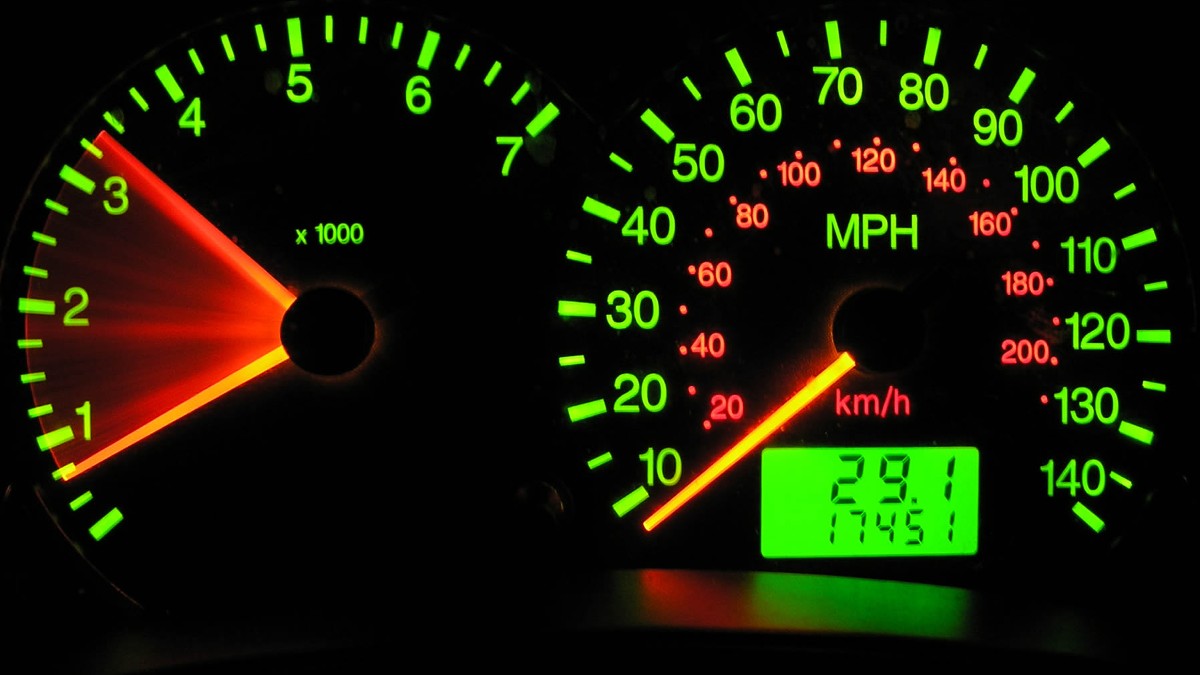
The instrument cluster of a car contains several important instruments that give drivers important information. Three such instruments are the speedometer, odometer, and trip meter. Many car owners don’t know the difference between these components, and if you are one of such drivers, you’ve come to the right place.
Speedometers track how fast a car is moving, odometer tracks the total distance traveled by car, while trip meters measure distance traveled between trips. The information provided by these three instruments is of great value to car owners.
Odometers, speedometers, and trip meters are usually located on the dashboard or instrument cluster where a driver can take a quick glance at them without losing concentration. Anyone who has ever driven a car is bound to be familiar with the speedometer and odometer. The trip meter is likely the one most people are less familiar with.
However, we’ll be discussing all three instruments and the differences between them for educational purposes. So, continue reading to learn more about these important instruments.
Understanding The Odometer, The Mileage Tracker
An odometer tracks mileage which is the total distance traveled by car. Designed to be non-resettable, an odometer will track mileage through the vehicle’s lifetime.
There are several important reasons for tracking the mileage of a car, and one of such reasons is to know the level of work the engine has been subjected to. And this is usually considered when buying a used car. A 5-year-old vehicle with 5,000 mileage will be considered better than a 2-year-old car with 10,000 mileage.
It’s a crime to tamper with the odometer of a car, something that happens as people reduce the readings on the odometer to increase the value of the car. It’s more difficult to tamper with digital odometers than mechanical odometers which are typically found in older cars.
A car’s mileage can also be used to track fuel economy, which is the rate at which the vehicle consumes fuel. Also, mileage can be used for maintenance practices such as oil changes or servicing the engine.
Your car insurance may also require you to track mileage, especially if you are using a mileage-based car insurance plan. Doing this allows you to know when to get a top-up or when to drive less to avoid exceeding the current limit of your plan.
Odometers can be digital or mechanical. Mechanical odometers are something of a dying breed as modern cars now favor digital odometers, which use an optical or magical sensor connected to the transmission of a car to calculate mileage. For mechanical odometers, mileage is calculated by an output shaft attached to the transmission.
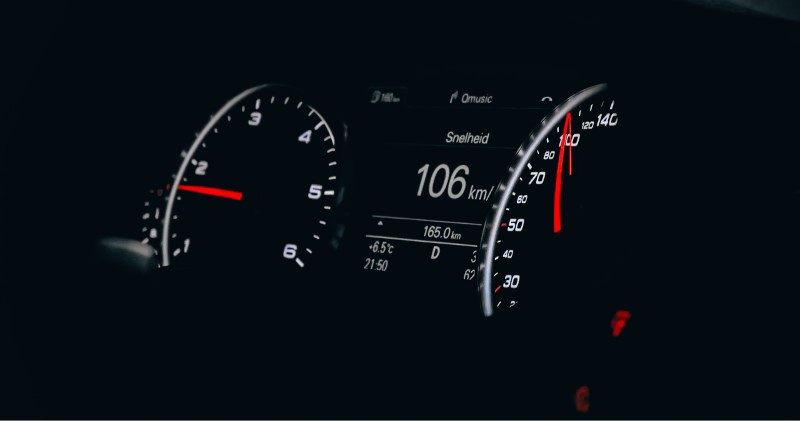
Understanding The Speedometer – The Instrument That Measures Speed
The speedometer is designed for only one purpose, and that is to measure the speed a car is traveling at. The speedometer starts reading the moment the car is in motion and goes back to zero when the car comes to a complete stop. So, unless the car is moving, the speedometer reading will always be at zero.
Without speedometers, drivers would have no idea of how fast they are moving. So, a speedometer allows drivers to know their current speed to allow them to drive safely to avoid accidents. Also, speedometers allow drivers to travel within speed limits. If you go above the speed limit, you may be flagged down by an officer of the law and receive a warning if you are really lucky. If Lady Luck isn’t smiling at you, you may be charged and fined.
Understanding The Trip Meter
The trip meter, also called the trip odometer, is an instrument some drivers may not be familiar with, especially those that drive older cars. Modern cars generally have trip meters because of how easy it is to incorporate them since they are usually digitized.
The function of a trip meter is to record distance making it similar to an odometer. However, the trip meter is resettable. You can always reset the trip meter back to zero whenever you want.
Some cars tend to come with two independent trip meters, which are usually designated Trip A and Trip B. Having two independent and resettable trip meters is advantageous to drivers as they can use the two meters for different purposes.
For example, Trip A can be used to monitor the total distance traveled in a day or in a week. At the end of the day or week, the trip meter can then be reset after taking note of the distance traveled. Trip B, on the other hand, can be used for other purposes, such as tracking the total distance traveled between fuel refills. This can give drivers insight into how far they can travel on a full tank, half tank, or a particular amount of fuel. Drivers will know whenever there’s a change in the rate at which the engine is consuming fuel or if the fuel obtained from a different source is of lower or higher quality.
Differences Between Speedometer, Odometer, and Trip Meter
As discussed above, the difference between these three instruments is their function. Below is a table to simplify the differences.

Vedran, is a long-time expert in the field of automotive repair. After completing school for car mechanics, Vedran has amassed years of experience working on all types of vehicles. In addition to running Vedran’s own successful car repair service, Vedran is passionate about sharing his knowledge with others and helping people take better care of their cars.
View all posts

What Does a Trip Mean In a Car? (An Accurate Guide)
Embarking in a car is more than just reaching a destination; it’s an experience that encompasses the essence of travel, adventure, and self-discovery.
In this article, we will explain what does a trip mean in a car , while exploring the nuances that make it a unique and memorable experience.
From the rhythm of the open road to the unexpected encounters along the way, we will uncover the true meaning of a car trip and how it transcends the mere act of getting from point A to point B.
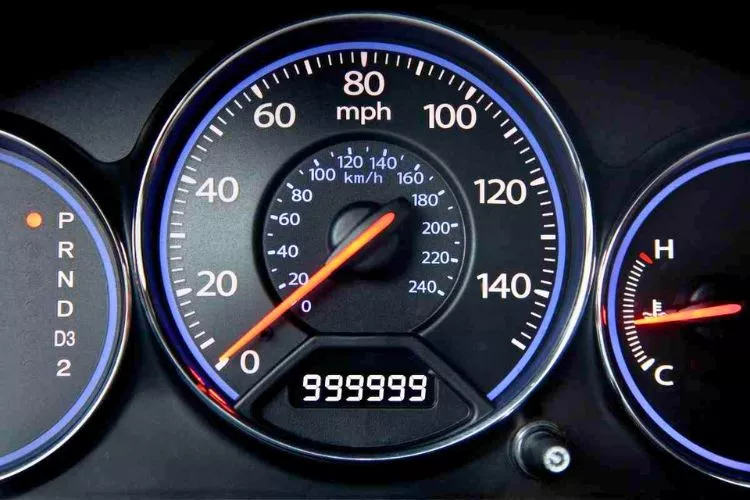
Join us as we embark on this exciting journey, and discover the magic within the simple pleasure of a car trip.
What does a trip mean in a car?
A trip in a car refers to a journey taken using an automobile, usually for leisure, exploration, or reaching a specific destination. It involves traveling on roads and highways, encompassing various distances and durations.
Car trips provide an opportunity to experience diverse landscapes, cultures, and attractions.
They offer flexibility and personalization, allowing travelers to tailor their experience to their preferences and interests. Ultimately, a car trip signifies a mode of travel that combines convenience, adventure, and the freedom to explore at one’s own pace.
What Does Trip A Mean on a Car?
Trip A is a feature on a car’s odometer that tracks the distance traveled for a specific journey, such as the number of miles driven between each fill-up. It helps calculate fuel economy and monitor driving patterns.
Most vehicles also have a Trip B feature, allowing drivers to log two trips on their odometer.
What Does Trip B Mean on a Car?
Trip A on a car’s odometer indicates the distance traveled for a specific journey, such as the miles driven between each fill-up. This feature helps drivers calculate fuel economy and monitor driving patterns. Most vehicles also have a Trip B feature, allowing them to track two journeys on the odometer.
Difference Between Trip Meter A and B
Trip meters A and B are features on a car’s odometer that allow drivers to track the distance traveled for separate journeys. Though they function similarly, they serve different purposes, offering versatility in monitoring various aspects of driving.
Here, we delve into the key differences between trip meters A and B:
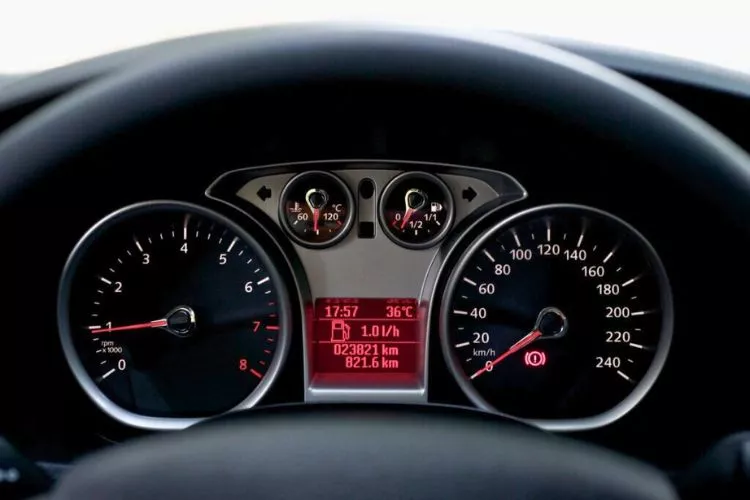
Trip Meter A:
- Trip meter A typically tracks shorter or more frequent journeys, such as daily commutes, errands, or short road trips.
- It can help calculate fuel economy over a specific period, enabling drivers to monitor their vehicle’s efficiency and adjust their driving habits accordingly.
- Drivers may reset trip meter A more frequently than trip meter B, allowing them to track different aspects of their driving in a shorter time frame.
Trip Meter B:
- Trip meter B is often used to track longer or less frequent journeys, such as road trips, vacations, or extended travel.
- It provides a way to monitor cumulative mileage over an extended period, which can be useful for planning vehicle maintenance or budgeting fuel expenses.
- Trip meter B may be reset less frequently than trip meter A, allowing drivers to track their driving patterns over a longer duration.
In summary, trip meters A and B are useful for drivers to monitor their driving habits and vehicle efficiency. While trip meter A is generally used for shorter, more frequent journeys, trip meter B is better suited for longer, less frequent trips.
By utilizing both trip meters, drivers can better understand their vehicle’s performance and make informed decisions about fuel consumption and maintenance.
How to use a trip meter in car?
A trip meter, also known as an odometer or trip odometer, is a useful feature in many cars that allows you to track the distance traveled during a specific journey or trip.
It can help monitor fuel efficiency , track the distance covered on a road trip, or calculate the distance between two points. This guide will provide you with detailed instructions on how to use the trip meter in your car.
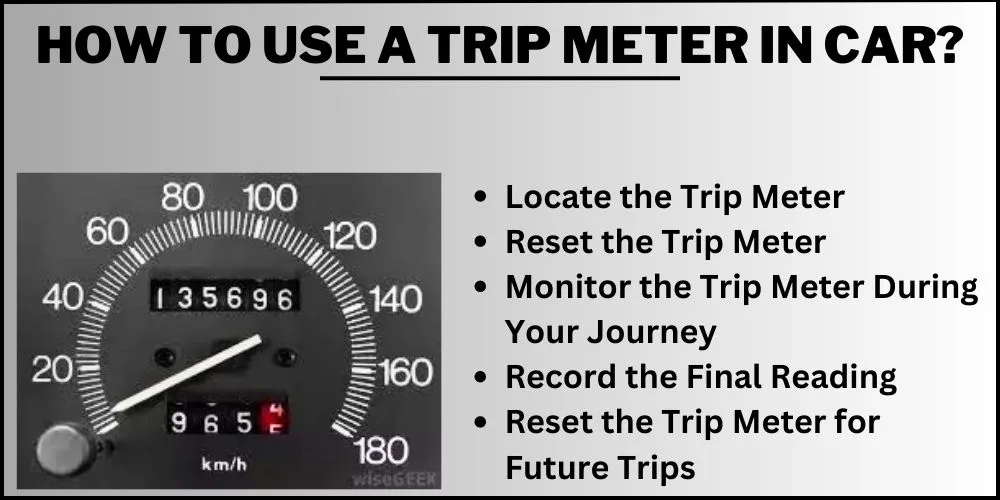
Locate the Trip Meter
The first step is to locate the trip meter in your car. It is usually found near the speedometer and fuel gauge on the dashboard. In some cars, it may be a digital display; in others, it may be a mechanical counter with rolling numbers. The trip meter is often labeled “Trip A” or “Trip B.”
Reset the Trip Meter
Before starting your journey, resetting the trip meter to zero is essential. This will ensure that you only measure the distance traveled during your specific trip. To reset the trip meter, follow these steps:
- Turn on the ignition: Ensure your car is turned on, but you don’t need to start the engine.
- Locate the reset button: Find the reset button or switch, which is typically located near the trip meter display. This button may be on the steering wheel or the dashboard in some cars.
- Press and hold the reset button: Press and hold the reset button for a few seconds until the trip meter resets to zero. In some cars, you may need to press the button multiple times to cycle through different trip meter options (e.g., Trip A, Trip B) and then reset the desired trip meter.
Monitor the Trip Meter During Your Journey
As you drive, the trip meter will continuously track the distance you have traveled. You can monitor the trip meter to keep track of your progress, fuel efficiency, or any other purpose you have in mind.
Record the Final Reading
When you reach your destination or complete your journey, take note of the final trip meter reading. This will give you the total distance traveled during your trip. If you need to calculate fuel efficiency, you can use this information along with the fuel consumed during the trip.
Reset the Trip Meter for Future Trips
Once you have recorded the final reading, don’t forget to reset the trip meter again in preparation for your next journey. This will ensure that you always have an accurate measurement of the distance traveled during each trip.
In summary, using the trip meter in your car is a simple yet valuable tool for tracking the distance covered during your journeys.
By locating the trip meter, resetting it before each trip, and monitoring the distance traveled, you can effectively use this feature to improve your driving experience and gather useful information about your car’s performance.
How Do You Turn Off a Car Trip Function?
The car trip function, also known as the trip meter or trip odometer, is a useful feature that helps you track the distance traveled during a specific journey.
However, there may be instances when you want to turn off this function to avoid distraction or simply because you don’t need it. This guide will provide detailed instructions on how to turn off the car trip function.
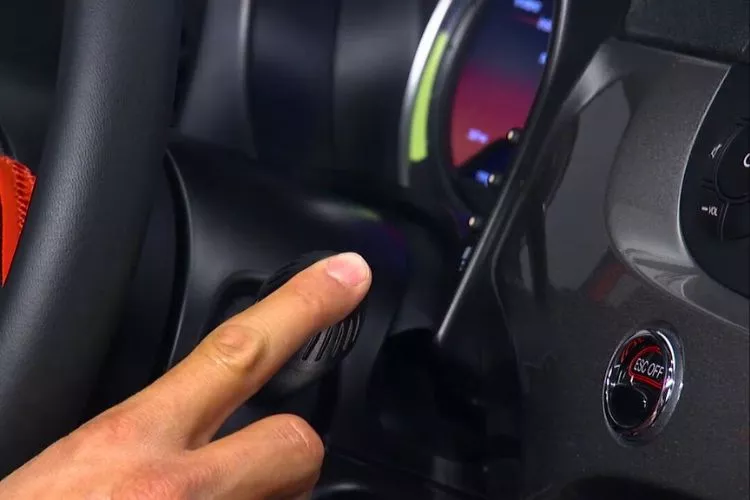
Locate the Trip Meter Controls
The first step in turning off the car trip function is locating the trip meter’s associated controls. These controls are typically found near the speedometer and fuel gauge on the dashboard. These controls may be on the steering wheel or within the digital menu system in some cars. The trip meter is often labeled “Trip A” or “Trip B.”
Check Your Car’s Manual
Since turning off the trip function can vary depending on the make and model of your car, it’s always a good idea to consult your car’s manual for specific instructions. The manual will provide detailed information on how to disable or turn off your vehicle’s trip function.
Turning Off the Trip Function
In some cars, turning off the trip function may not be possible. Instead, you can reset the trip meter to zero, which effectively disables the distance tracking for that particular trip. However, for cars that do allow you to turn off the trip function, follow these general steps:
- Locate the trip meter controls: Find the button, switch, or menu option that controls the trip meter function.
- Access the trip meter settings: Press the button, switch, or navigate through the menu options to access the trip meter settings.
- Turn off the trip function: Look for an option to disable or turn off the trip meter. This may involve selecting “Off” or unchecking a box next to the trip meter function. In some cars, you may need to press and hold the trip meter button for a few seconds to turn off the function.
Alternative: Reset the Trip Meter
If your car does not have the option to turn off the trip function, you can reset the trip meter to zero instead. This will stop the tracking of distance for the current trip. To reset the trip meter, follow these steps:
In summary, turning off the car trip function may not always be possible, but you can reset the trip meter to zero as an alternative. You can effectively disable the trip function when needed by locating the trip meter controls, consulting your car’s manual, and following the appropriate steps.
How to reset Trip A and trip B?
- Locate the trip meter controls: Find the button, switch, or menu option that controls the trip meter function, typically located near the speedometer and fuel gauge. These controls may be on the steering wheel or within the digital menu system in some cars.
- Access Trip A settings: Press the trip meter button or navigate through the menu options to access Trip A. The trip meter display should now show the current reading for Trip A.
- Reset Trip A: Press and hold the reset button or switch for a few seconds until the Trip A reading resets to zero. In some cars, you may need to press the button multiple times to cycle through different trip meter options and then reset Trip A.
- Access Trip B settings: Press the trip meter button or navigate through the menu options again to access Trip B. The trip meter display should now show the current reading for Trip B.
- Reset Trip B: Press and hold the reset button or switch for a few seconds until the Trip B reading resets to zero. In some cars, you may need to press the button multiple times to cycle through different trip meter options and then reset Trip B.
- Confirm the reset: Check the trip meter display to ensure that Trip A and Trip B have been reset to zero.
- Resume driving: With Trip A and Trip B reset, you can now continue driving and accurately track the distance for your new journeys.
Does Every Car Have a Car Trip Odometer?
Yes, most cars have a car trip odometer, which allows drivers to track the distance traveled during a specific journey or trip. The trip odometer is typically found on the dashboard, near the speedometer and fuel gauge, and is often labeled as “Trip A” or “Trip B”.
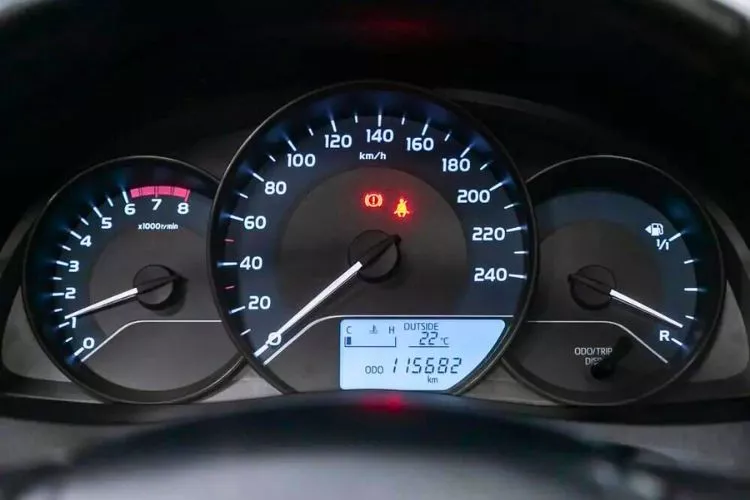
Conclusion :
In conclusion, a trip in a car refers to using a trip odometer, a valuable feature that tracks the distance traveled during a specific journey or trip. This tool, often labeled “Trip A” or “Trip B,” is typically found on the dashboard near the speedometer and fuel gauge.
Using the trip odometer, drivers can monitor fuel efficiency, track the distance covered on road trips, or calculate the distance between two points.
With a better understanding of what a trip means in a car, drivers can effectively utilize this feature to enhance their driving experience and gather useful information about their vehicle’s performance.
About The Author

David Miller
Related posts.
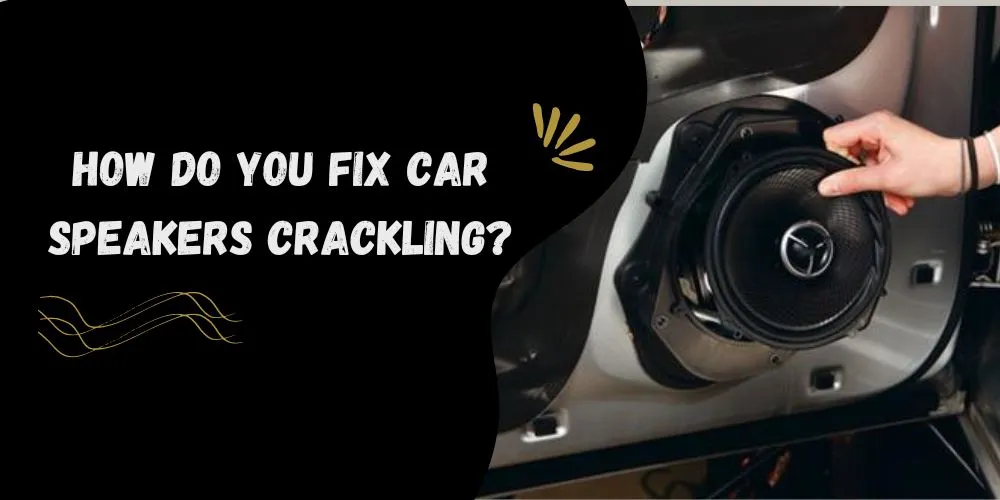
How to Fix Car Speakers Crackling In 10 Easy Ways

How Many Miles Can a BMW Last? (My Best Guess)
Leave a comment cancel reply.
Your email address will not be published. Required fields are marked *
Save my name, email, and website in this browser for the next time I comment.
The Enlightened Mindset
Exploring the World of Knowledge and Understanding
Welcome to the world's first fully AI generated website!
A Comprehensive Guide to Understanding and Resetting a Trip Odometer
By Happy Sharer
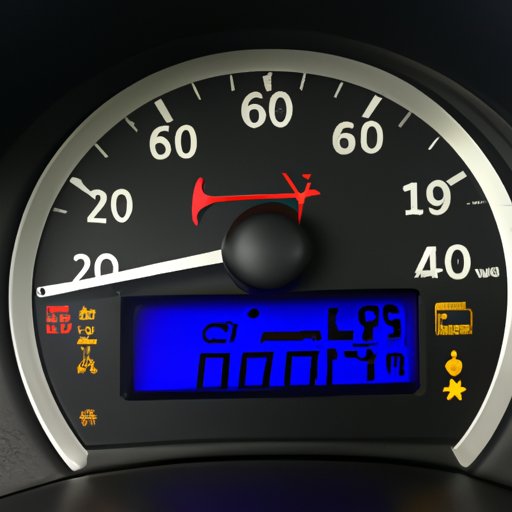
Introduction
A trip odometer is a small device that’s used to measure the total distance traveled by a vehicle. It’s typically found on the dashboard of most cars and trucks, and it’s often used by drivers to track their mileage and plan out trips more efficiently. The trip odometer is usually reset when a driver starts a new journey, but sometimes they may need to reset it if they’ve encountered any issues while using it. This article will provide a comprehensive guide to understanding and resetting a trip odometer.
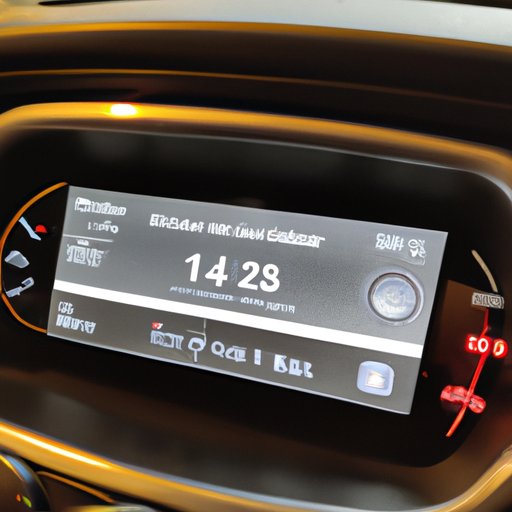
How to Reset Your Trip Odometer
The first step in resetting a trip odometer is to locate the reset stem. This is usually located on the right side of the steering wheel or near the dashboard. Once the reset stem has been located, the next step is to press and hold the reset button until the odometer displays 0.0. If the reset button isn’t working, then the driver may need to consult the owner’s manual or contact a professional mechanic for further assistance.
Tips on Using a Trip Odometer
Using a trip odometer can be very beneficial for drivers who are looking to save money on fuel costs or travel long distances. Other benefits include improved fuel economy, enhanced safety, and better route planning. To maximize efficiency when using a trip odometer, drivers should make sure to reset it at the beginning of every journey, and they should also keep track of the total distance traveled throughout the journey.
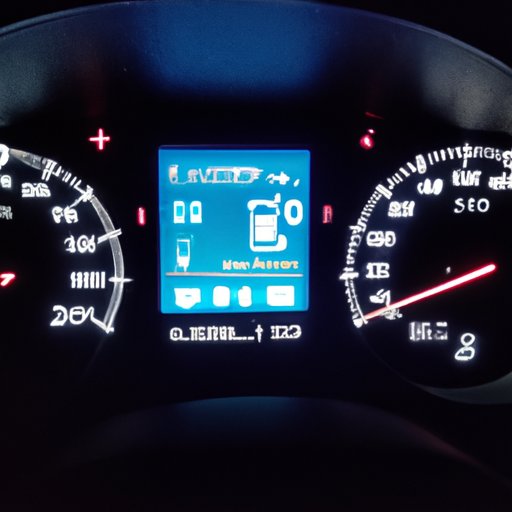
Everything You Need To Know About Trip Odometers
Trip odometers have been around since the early 20th century, and they’ve evolved significantly over the years. Today, there are several different types of trip odometers available, including mechanical, digital, and GPS-enabled models. Mechanical models are the most basic type, and they rely on a physical cable to keep track of the vehicle’s total distance traveled. Digital models are more advanced and feature a digital display that can be used to track the odometer’s readings. GPS-enabled models are the most advanced type, and they use GPS technology to accurately track the vehicle’s location and total distance traveled.
A Step-by-Step Guide to Resetting a Trip Odometer
Resetting a trip odometer is relatively simple, but it can vary slightly depending on the type of odometer being used. In general, the process involves locating the reset stem, which is usually located on the right side of the steering wheel or near the dashboard. Once the reset stem has been located, the driver should press and hold the reset button until the odometer displays 0.0. If the reset button isn’t working, then the driver may need to consult the owner’s manual or contact a professional mechanic for further assistance.
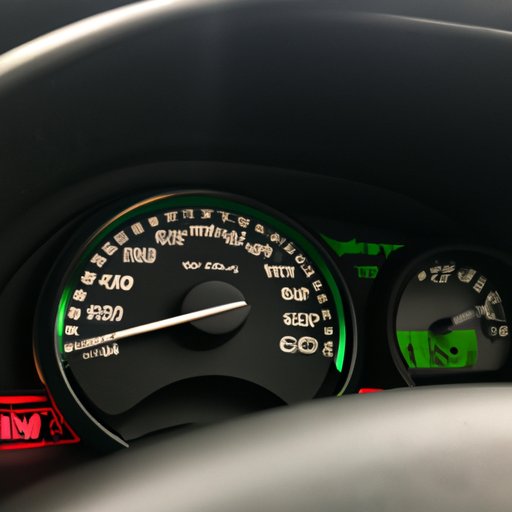
Exploring the Benefits of Using a Trip Odometer
Using a trip odometer can be beneficial for drivers in several ways. The most obvious benefit is improved fuel economy, as the device can help drivers to plan out their journeys more efficiently by tracking the total distance traveled. This can help them to reduce their fuel costs, as well as their overall carbon footprint. Additionally, using a trip odometer can also enhance safety, as it can be used to track the vehicle’s location and ensure that the driver is not lost or stranded in unfamiliar territory.
Trip odometers are a useful tool for drivers who want to save money on fuel costs or plan out their journeys more efficiently. They offer several benefits, including improved fuel economy and enhanced safety. Resetting a trip odometer is relatively easy, and it only takes a few moments to do so. By following the steps outlined in this article, drivers can easily reset their trip odometer and enjoy all the benefits that come with using one.
(Note: Is this article not meeting your expectations? Do you have knowledge or insights to share? Unlock new opportunities and expand your reach by joining our authors team. Click Registration to join us and share your expertise with our readers.)
Hi, I'm Happy Sharer and I love sharing interesting and useful knowledge with others. I have a passion for learning and enjoy explaining complex concepts in a simple way.
Related Post
Exploring japan: a comprehensive guide for your memorable journey, your ultimate guide to packing for a perfect trip to hawaii, the ultimate packing checklist: essentials for a week-long work trip, leave a reply cancel reply.
Your email address will not be published. Required fields are marked *
Expert Guide: Removing Gel Nail Polish at Home Safely
Trading crypto in bull and bear markets: a comprehensive examination of the differences, making croatia travel arrangements, make their day extra special: celebrate with a customized cake.

IMAGES
VIDEO
COMMENTS
Conclusion. Trip A and B on an odometer refer to the odometer's two trip meters. The "A" trip meter measures the distance traveled since it was the last reset, whereas the "B" trip meter has the same purpose, but can be reset independently of Trip A. This means you can use either trip meter to track your mileage for a specific purpose ...
A trip odometer is a useful feature found alongside the main odometer on a vehicle's dashboard. It provides additional information to the driver by tracking the distance covered during individual trips. Unlike the main odometer, which logs the total mileage the vehicle has accumulated over its lifetime, a trip odometer can be reset. ...
Normally, resetting trip A and trip B bears no difference. The general formula is to press and hold the trip button on car located on the switch on the left. In addition, it will reset your driving time, average driving speed, and mileage. The longer you hold the button, the more data is reset. You should note that if the vehicle is idle for 4 ...
Trip A and Trip B are used to measure different mileage on the trip odometer. One can be used to measure the number of miles between each tank fill-up, while the other is used to measure the number of miles on each road trip, allowing you to estimate how fuel efficient your vehicle is. Not all vehicles come with Trip A and Trip B, and vehicle ...
The main difference between the trip meter and odometer is that the odometer measures the total distance throughout your vehicle's lifetime. The odometer cannot be easily reset, and it's illegal to do so. The trip meter, meanwhile, measures the distance over a specific trip. A lot of vehicles even have a trip a and a trip b gauge.
The odometer is a measurement device that shows the total distance traveled by the car. It's found on the car's dashboard. Two Greek words come together to form the word "odometer," leaving us with the meaning of path and measure. There is also a trip odometer on most cars. Unlike the standard odometer, the trip odometer is easy to ...
If you see Trip A on your car, know that it's used to keep track of a section of mileage separate from your standard odometer. Trip A tracks shorter distances and typically resets itself when you refill your gas tank. On the other hand, Trip B is used to handle longer distances and will go until you turn it off.
The odometer cannot be reset and tampering with it is a crime. You also have two trip meters (A and B). These are used to measure the mileage of specific trips. Both trip meters can be reset to 0 so you can accurately track mileage when necessary and then clear it when you no longer need that information.
Welcome to Belleville Toyota!Today, I will be showing you how to adjust the odometer information displayed on your multi-information screen. If your Toyota d...
The lower the odometer's reading, the "newer" and less worn-out it is. The odometer's display can be found on your car's dash. If it's mechanical, it will consist of 7 boxes, with the final box (representing 1/10th of a mile) being a different color. The first six boxes show the total miles driven (up to 999,999 miles).
A speedometer keeps track of the speed at which a car is moving at any given time. The odometer is the one responsible for keeping track of the vehicle's total distance traveled throughout its entire lifetime and is non-resettable. Whereas, a trip meter is similar to an odometer but it only counts the distance traveled between trips and is ...
Trip Odometer: Registers the distance you have traveled on an individual trip. Trip Timer: Keeps track of how long each trip takes. The timer stops when you turn your vehicle off and restarts when you restart your vehicle. Average Fuel: Shows the average fuel economy for a given trip. Outside Temperature: Shows the outside air temperature.
Price range for all vehicles. ( 83) The odometer on a car tells how far the vehicle has traveled. It can be mechanical, electrical, or a combination of the two. Part of the odometer includes a trip meter. A trip meter indicates how far the car has traveled during a certain period of time. For modern vehicles, these are mostly electronic.
Mechanical odometers are turned by a flexible cable made from a tightly wound spring. The cable usually spins inside a protective metal tube with a rubber housing. On a bicycle, a little wheel rolling against the bike wheel turns the cable, and the gear ratio on the odometer has to be calibrated to the size of this small wheel.On a car, a gear engages the output shaft of the transmission ...
A "trip" on a car's speedometer is the total distance that the vehicle has traveled since it was last reset. This information can be useful for keeping track of how far you've driven on a specific trip, or over the course of a longer period of time. To reset the trip, simply press and hold the button located next to the odometer reading ...
Odometer rollover, which occurs when an odometer or trip meter resets to zero after reaching the maximum value, Digital clocks might not roll over. [15] There is usually a trip meter in newer vehicles (trip odometer). Since a trip meter, unlike an odometer, may be reset at any time throughout a trip, it is possible to record the distance ...
Unlike the primary odometer, trip meters in a Tesla can be reset according to your needs. This feature comes in handy when you want to track the miles driven on a long road trip, monitor the ...
An odometer or odograph is an instrument used for measuring the distance traveled by a vehicle, such as a bicycle or car. The device may be electronic, mechanical, or a combination of the two ( electromechanical ). The noun derives from ancient Greek ὁδόμετρον, hodómetron, from ὁδός, hodós ("path" or "gateway") and μέτρον ...
Odometer: Trip Meter: Tracks the speed at which you are driving. Tracks the total distance traveled by the car and the latest displayed figure is the current total mileage of the car. Tracks distance between trips and is resettable. The maximum reading can be 140 or 160 miles/hour or even higher for more powerful cars.
An odometer is a device for measuring the distance traveled by a vehicle. The odometer usually lives in the vehicle's dashboard. "Odometer" derives from two Greek words meaning "path ...
A trip meter, also known as an odometer or trip odometer, is a useful feature in many cars that allows you to track the distance traveled during a specific journey or trip. It can help monitor fuel efficiency , track the distance covered on a road trip, or calculate the distance between two points.
The first step in resetting a trip odometer is to locate the reset stem. This is usually located on the right side of the steering wheel or near the dashboard. Once the reset stem has been located, the next step is to press and hold the reset button until the odometer displays 0.0. If the reset button isn't working, then the driver may need ...
A trip odometer is a vehicle device that will measure mileage data for short distances. However, remember that there are some caveats you have to be aware of.
The agencies are asking people who bought vehicle through either the auto plaza or the Garzas or Cissne to contact Franklin County Detective Mona Bolanos at 509-545-3501 or Adams County Sgt. Cale ...